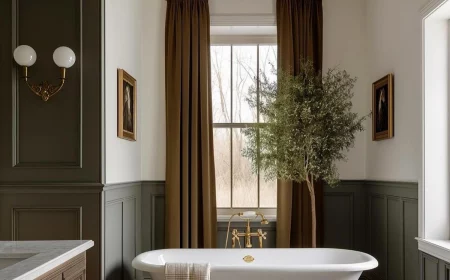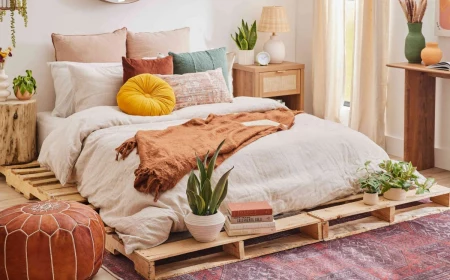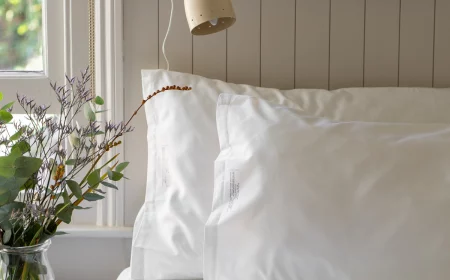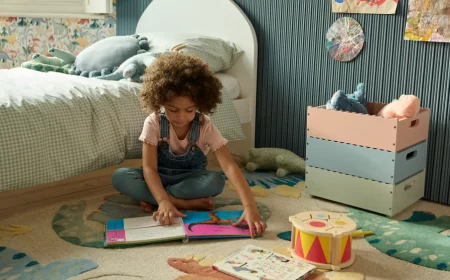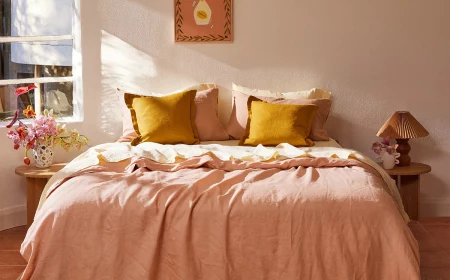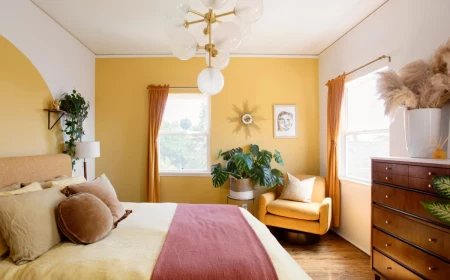How to Design a Nursery That’s Actually Safe (and Won’t Need a Redo in 2 Years)
Walking into an empty room that’s about to become a nursery is such a special feeling. It’s pure hope and excitement. But let’s be real, that excitement can quickly turn into full-blown panic. The number of choices for cribs, paint colors, and cute little decorations is enough to make anyone’s head spin. You want to create a gorgeous, magical space, and you will! But first, we need to build a room that’s safe and actually works for a tired parent at 3 a.m.
In this article
Honestly, I’ve seen it all. I’ve seen stunning, thousand-dollar cribs that were less safe than a basic model from Target. I’ve seen layouts that looked perfect on Pinterest but were a nightmare in practice. The biggest takeaway? A great nursery isn’t about trendy themes. It’s about a solid foundation of safety and smart design that will serve your family long after the baby has moved on from the bassinet.

First Things First: Safety and Layout Are Non-Negotiable
Before you even think about a paint chip or a cute animal mobile, we have to talk about the bones of the room. A safe layout is the absolute starting point. So many people get swept up in the theme, but the pros always start with a floor plan and a safety checklist. Getting this right saves you money, headaches, and gives you genuine peace of mind.
Let’s Talk About What You Can’t See
Understanding why these safety rules exist is half the battle. It’s not about being scared; it’s just about basic science.
A big one is air quality. New furniture, carpet, and especially paint can release chemicals called Volatile Organic Compounds (VOCs). These can be rough on a baby’s tiny, developing lungs. This is why you should always, always use low-VOC or zero-VOC paint. The “new paint smell” is literally chemicals off-gassing. For furniture, look for a Greenguard Gold certification. It’s a strict standard that ensures low chemical emissions. After you’ve painted and assembled everything, open the windows and let that room air out for at least a week.
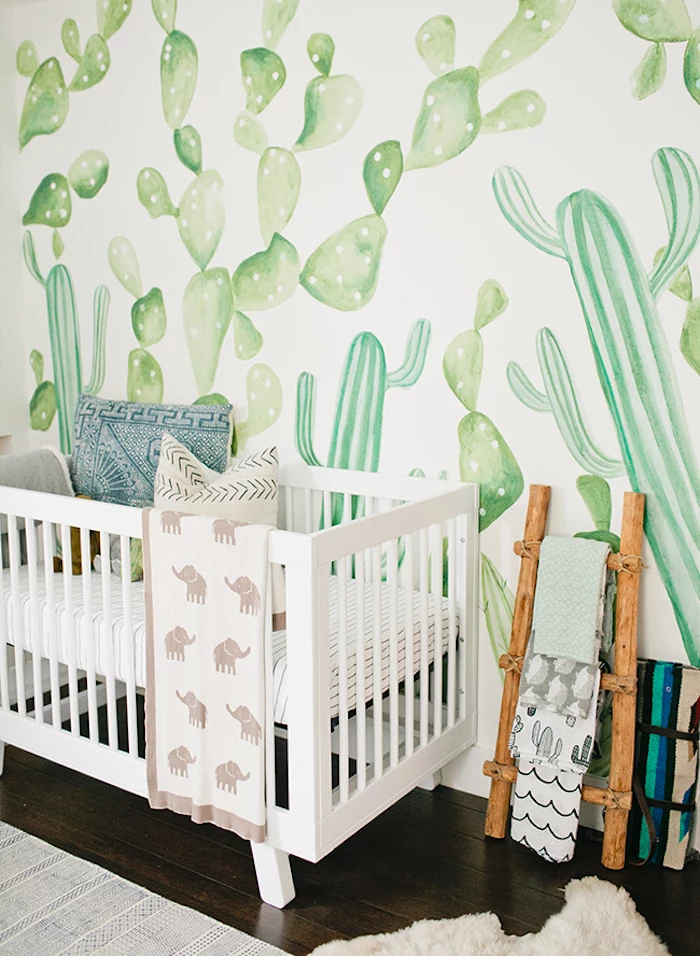
Next up: furniture tipping. This one is serious. As soon as your baby can pull up, they will try to climb everything. Any furniture over 30 inches high—like a dresser or bookcase—absolutely MUST be anchored to the wall. The little plastic straps that come in the box are okay, but I’d strongly recommend spending $10-$20 on a heavy-duty steel cable anti-tip kit from a hardware store.
Quick tip: You have to anchor it to a stud in the wall, not just the drywall. Don’t know what a stud is? It’s the strong wooden beam behind the drywall. Grab a $20 stud finder from Home Depot or Amazon, slide it along the wall until it beeps, and mark that spot with a pencil. That’s your anchor point. This is not an optional step!
The Nursery “Work Triangle”
You’ve heard of the work triangle in a kitchen, right? We can apply the same idea to the nursery. The three key spots are the crib, the changing station, and the feeding chair. You want to be able to move between these three effortlessly, even when you’re half-asleep and holding a baby.
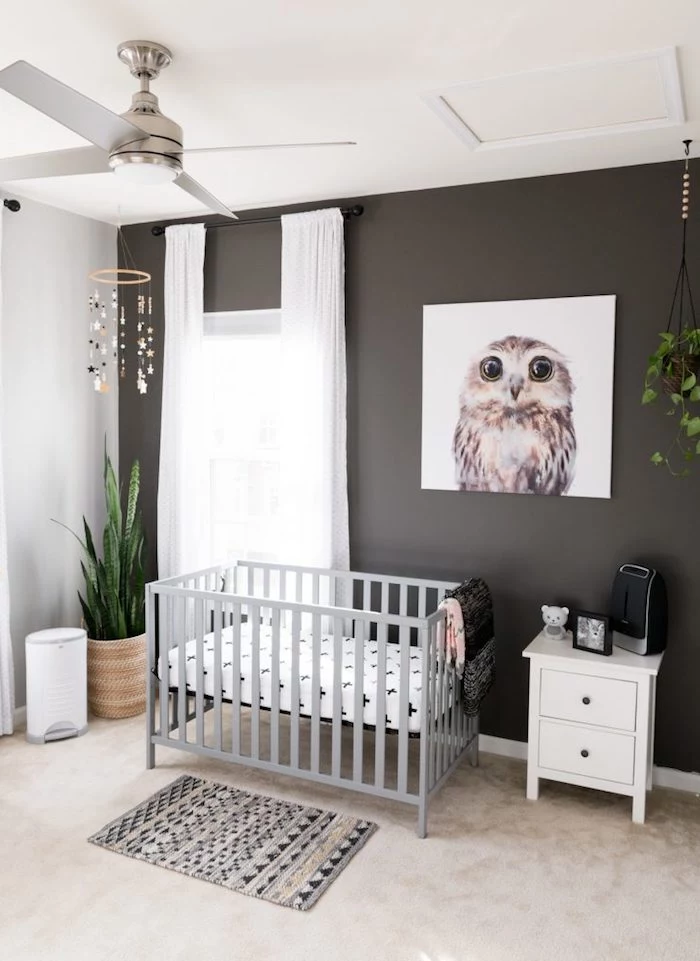
Here’s a simple way to map it out:
- The Crib: Place the crib against a solid interior wall. Keep it far away from windows, blinds, and any cords. Drafts can make a baby chilly, and blind cords are a major safety hazard. And never, ever place a crib directly under a window.
- The Changing Station: This should be just a few steps from the crib to make those middle-of-the-night changes as quick as possible. All your essentials—diapers, wipes, cream—should be within arm’s reach. You should never have to turn your back on your baby to grab something.
- The Feeding Chair: Your glider or rocker is your cozy corner. Stick it somewhere with enough room to rock, and put a small side table next to it for a bottle, your phone, or a book. A dimmable lamp nearby is a lifesaver.
Before buying a single piece of furniture, use painter’s tape to mark out the dimensions on the floor. This little trick helps you truly feel the space and make sure you have clear, wide pathways. Aim for at least 3 feet of walking space.
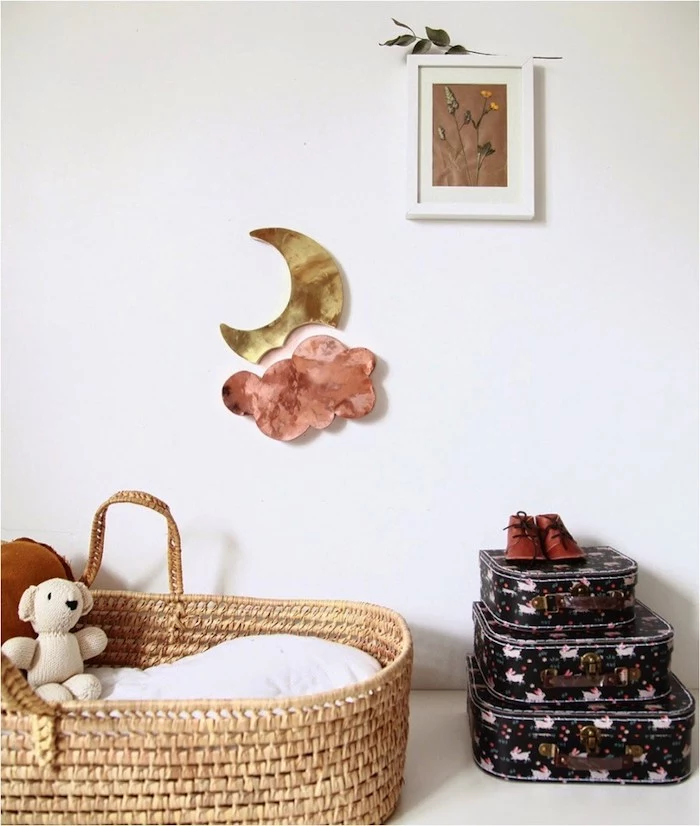
A Note on Cribs: New is Best
When it comes to the crib, there is no room for compromise. All new cribs sold today must meet strict federal safety standards, which regulate things like the distance between slats (no more than 2 3/8 inches) so a baby’s head can’t get trapped. Those old-school drop-side cribs were banned for a reason—the hardware could fail and create a dangerous gap.
I strongly, strongly advise against using a hand-me-down or antique crib. It might be beautiful, but it’s nearly impossible to know if it meets today’s safety standards. For something this important, a new, safe crib is one of the best investments you can make. You can find perfectly safe and sturdy models starting around $200-$300.
Choosing Furniture That Will Actually Last
Nursery furniture needs to be tough. I always guide people to invest in a few high-quality core pieces that will grow with their child, rather than a room full of items with a two-year shelf life.
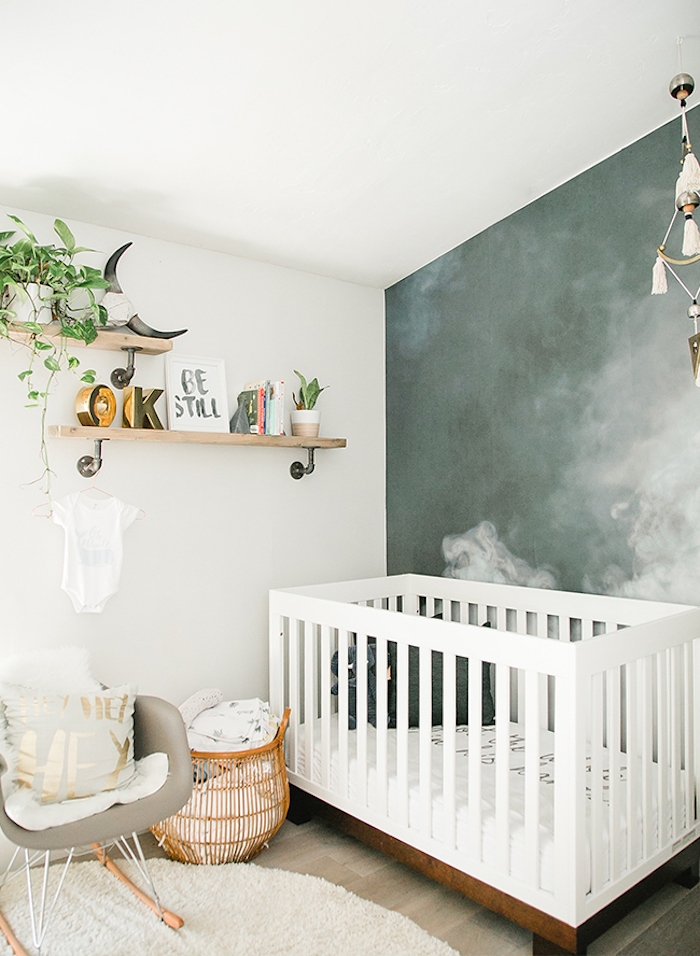
The Crib: The Star of the Show
The crib is the centerpiece. Look for solid wood construction and a non-toxic finish. A must-have feature is an adjustable mattress height. You’ll start with the mattress on the highest setting for your newborn, but as soon as your baby can sit or pull themselves up, you MUST lower it to the bottom. The mattress itself should be firm, flat, and fit snugly. If you can fit more than two fingers between the mattress and the crib frame, it’s too small and poses an entrapment risk.
The Changing Table vs. The Dresser
Okay, let’s have a frank discussion. You could buy a dedicated changing table for maybe $150-$200, and it will serve its purpose for about two years. A much, much smarter investment, in my opinion, is a sturdy, low dresser. You can buy one for $300-$600, secure a contoured changing pad to the top, and voilà. When your child is out of diapers, you just remove the pad, and you have a useful piece of furniture that will last for a decade. It saves money and is way less wasteful. Plus, the drawers are perfect for organizing diapers and supplies.

The Glider: Your Future Command Center
You are going to spend SO many hours in this chair. Comfort is everything. When you’re in the store testing them out, don’t be shy. Sit down and rock for a solid five minutes. Listen closely. Does it make any noise? A tiny creak in a bustling store will sound like a foghorn in a silent nursery at 3 a.m. Trust me on this.
Look for durable, easy-to-clean fabrics. Performance fabrics are great, and removable, washable cushion covers are even better. Oh yeah, and an ottoman isn’t just a luxury—it’s essential for putting your feet up during those long feeding sessions. Expect to spend anywhere from $300 for a basic model to over $1,200 for a high-end one known for a silent, smooth glide.
Creating a Vibe: Color, Light, and a Little Science
Now that the safe and functional stuff is handled, we can get to the fun part: creating a calm and nurturing atmosphere.
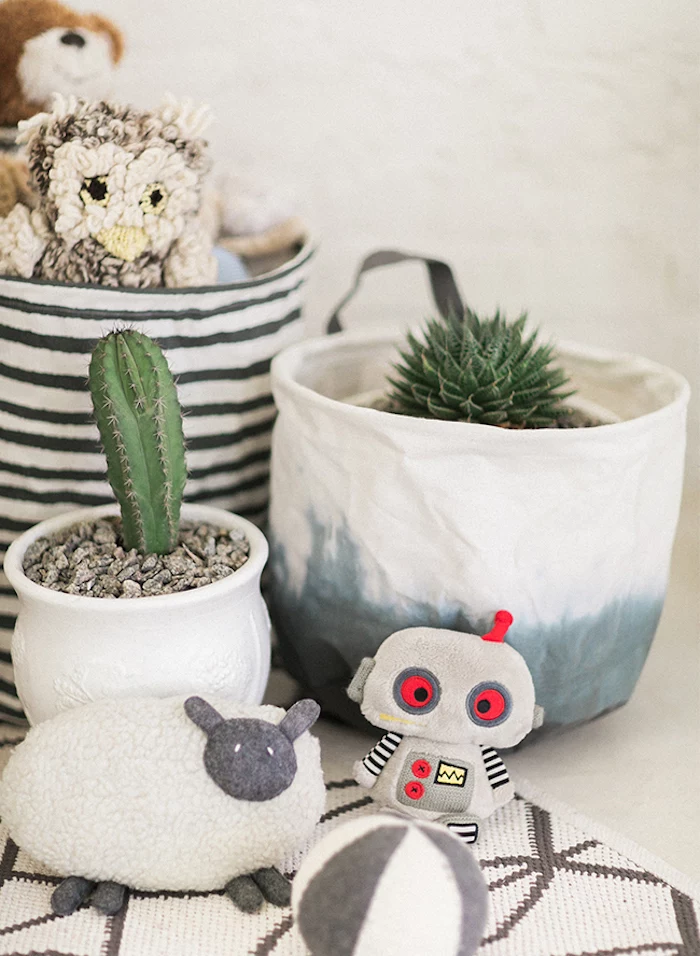
Color and Light for Tiny Eyes
Newborns’ vision is still developing, and for the first few months, they see best in high contrast. This is why simple black-and-white patterns are so fascinating to them. You can easily incorporate this with a mobile or a play mat.
For the walls, I’d steer clear of super bright, loud colors like fire-engine red. They can be overstimulating in a room that’s supposed to be for sleep. This doesn’t mean it has to be boring beige! Soft, muted blues, greens, grays, or even a dusty rose are incredibly calming. A little pro tip: when you’re at the paint store, look for the ‘LRV’ (Light Reflectance Value) number on the back of the paint chip. For a nursery, I suggest choosing a color with an LRV of 60 or higher to keep the room feeling bright and airy.
Good to know: you need layered lighting.
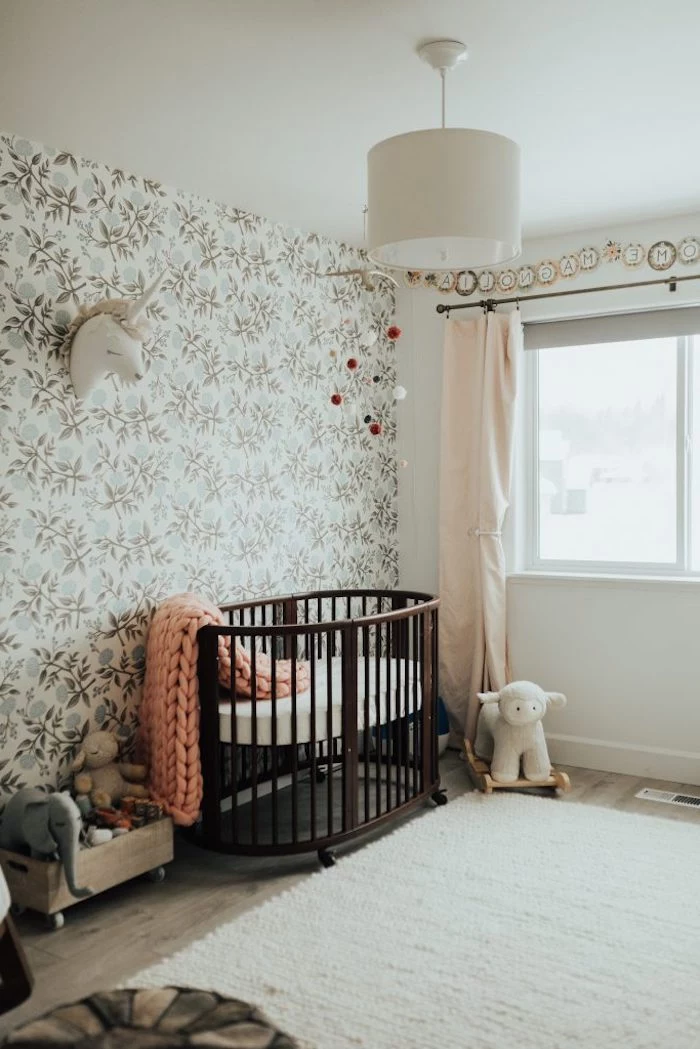
- General Light: A ceiling fixture on a dimmer switch is perfect for playtime and cleaning.
- Task Light: A small lamp near the changing table or in a reading nook.
- Sleep Light (or lack thereof): True blackout curtains are a game-changer. Not “room darkening,” but 100% blackout. They block outside light, helping to regulate a baby’s sleep cycle. Mount the curtain rod a few inches wider than the window frame and as high as possible to stop light from peeking around the edges.
The Final Layer: Storage and Decor
The last step is adding personality, but the key here is restraint. A cluttered room is not a calm room, and a lot of cute decor can be a hidden hazard.
Decorating with a Safety-First Mindset
If you only remember one thing from this entire article, let it be this: NEVER hang anything heavy on the wall above the crib. No framed pictures, no mirrors, no shelves. It’s just not worth the risk. If you want a big visual element, wall decals are a much safer and fantastic alternative.
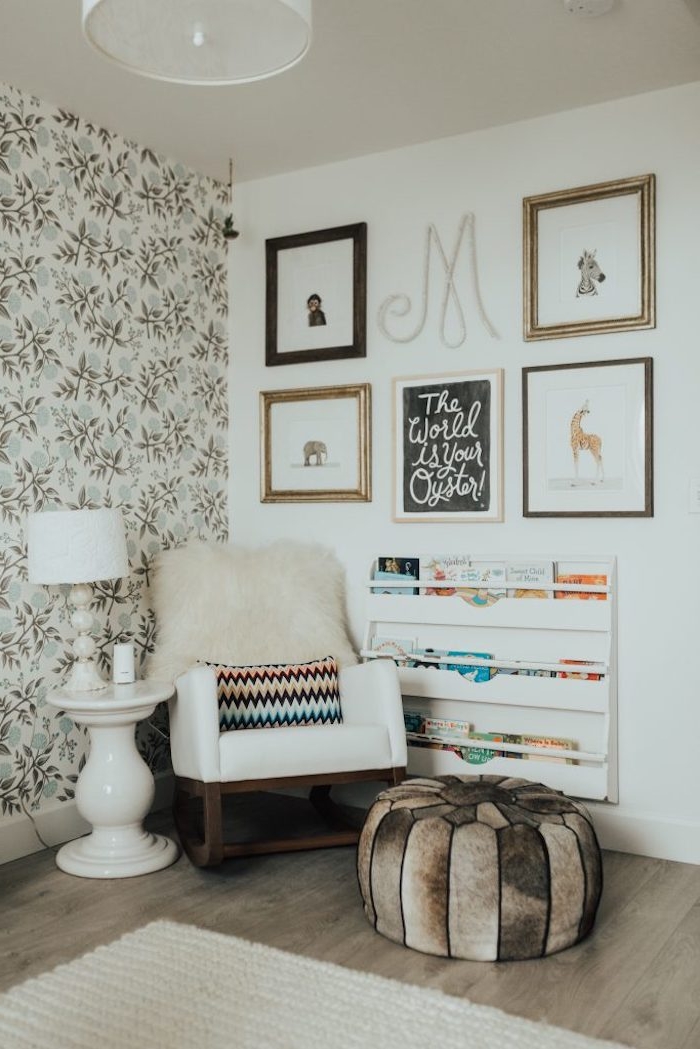
Mobiles should be securely attached and hung high enough that the baby can’t reach them. Once your baby starts pushing up on their hands and knees (usually around 4-5 months), it’s time to take the mobile down.
And for the crib itself, remember the experts say a bare crib is the safest crib. That means a fitted sheet on a firm mattress, and that’s it. No bumpers, no blankets, no pillows, no stuffed animals.
A Room That Grows With Them
A great nursery is designed to adapt. Instead of a theme based on a specific character they’ll outgrow, think in broader concepts like “woodland,” “celestial,” or “adventure.” These themes can easily evolve as your child’s interests change.
I learned this lesson the hard way early in my career. We designed a picture-perfect, very “babyish” nursery. It was beautiful! But a year later, the parents called me back. Their active toddler needed real play space, and the delicate decor just wasn’t working. We had to rethink the whole room. That taught me to always design for the child you will have, not just the infant you’re expecting.
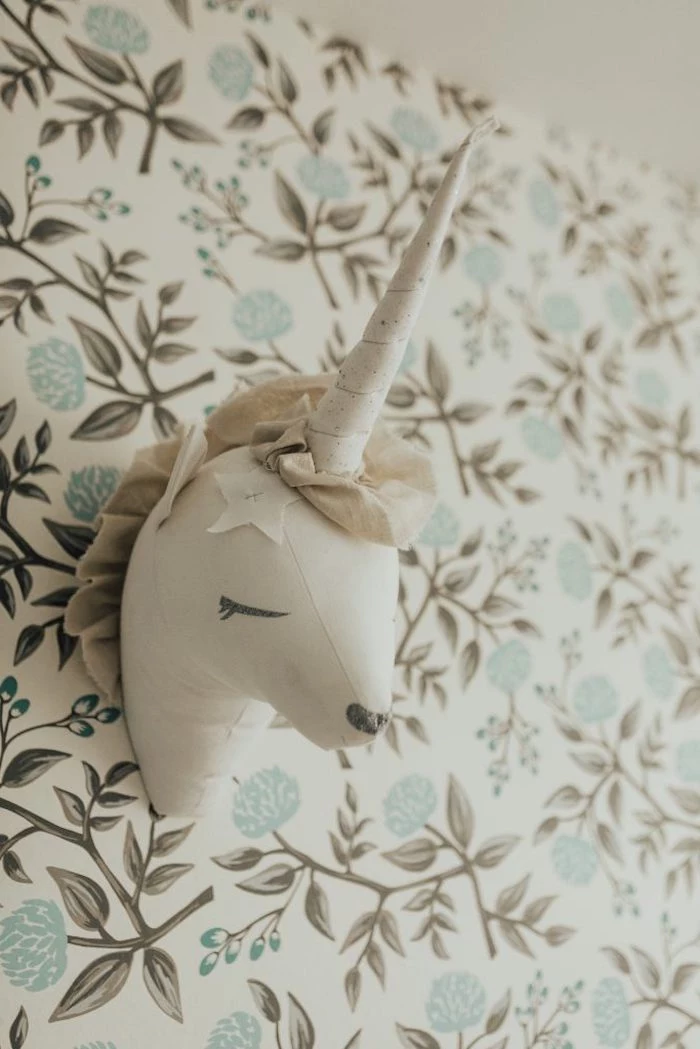
By focusing on safety first, function second, and choosing adaptable pieces, you can create a beautiful space that is also a secure and nurturing haven for your child. And hey, here’s a quick win you can do today: do a quick online search for “CPSC recalls” to check if any baby gear you’ve already been gifted is on the list. It takes five minutes and is totally worth it for your peace of mind.
Inspirational Gallery
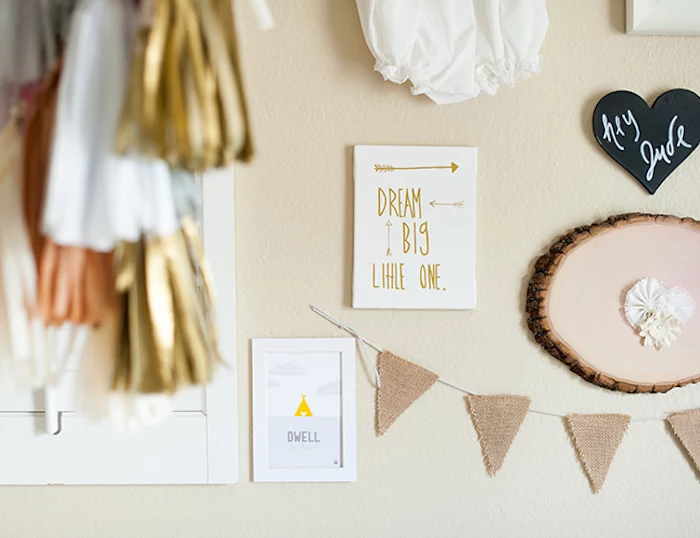


When choosing a glider or rocking chair, think beyond the first few months. A chair like the Babyletto Kiwi Glider Recliner not only provides a smooth motion for soothing a newborn but also features a built-in USB port and converts to a stationary recliner. It becomes a cozy reading nook for you and your toddler later on, making it a purchase that lasts well beyond the nursery years.
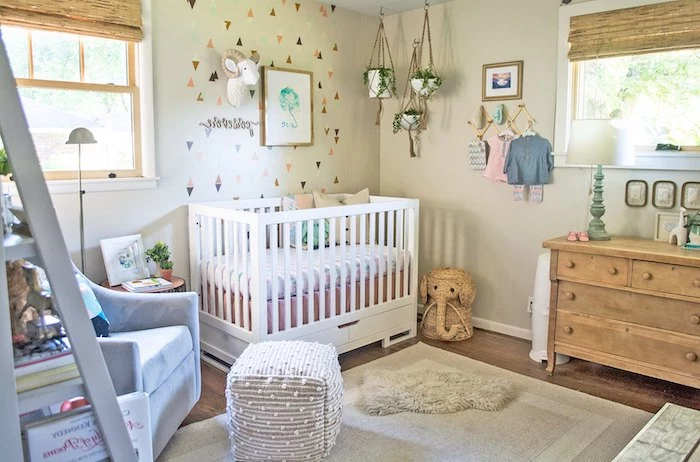
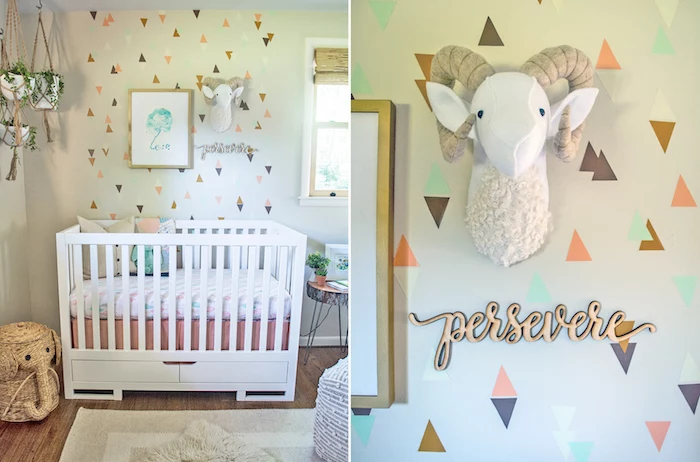
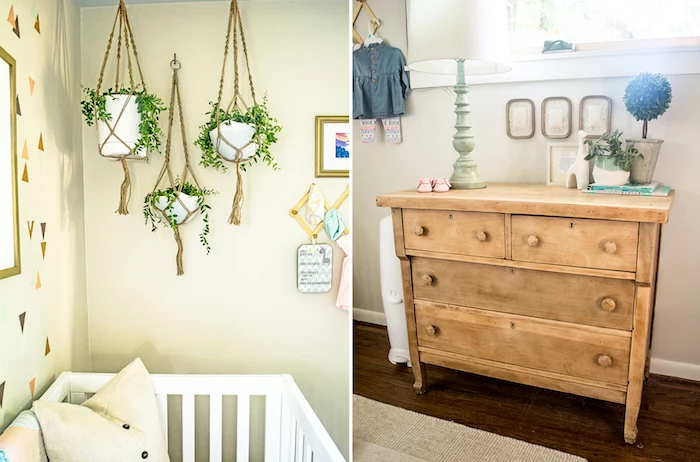
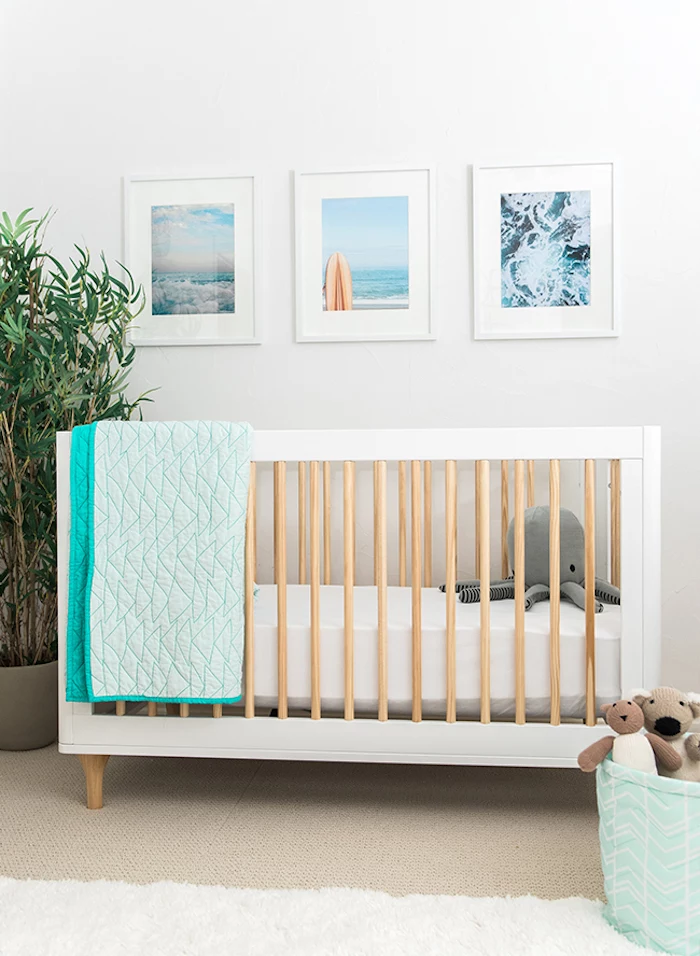
- Create zones: one for sleeping (crib), one for changing (dresser/table), and one for feeding (chair).
- Ensure a clear, safe path between these zones for those half-asleep 3 a.m. trips.
- Position the crib away from windows, blinds, and cords, but ideally within view of the door.
The secret? A layout that prioritizes flow and safety over perfect symmetry.
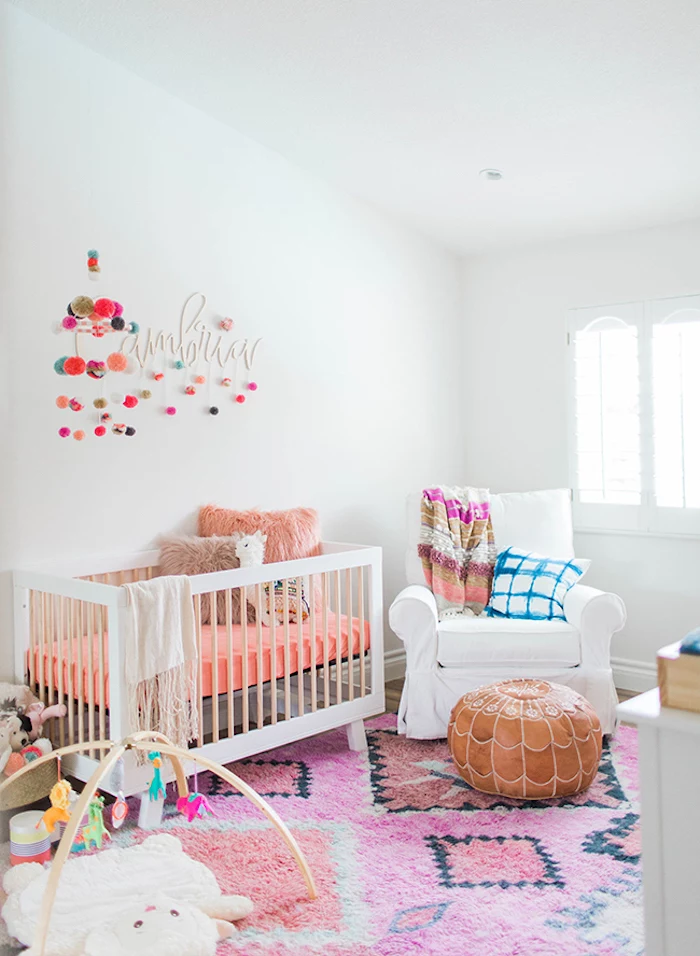

A baby’s room should have an average humidity level between 40% and 60% to help prevent dry skin and ease congestion.
Using a cool-mist humidifier, especially during dry winter months or in air-conditioned rooms, can significantly improve your baby’s comfort and sleep quality. Look for models like the Fridababy 3-in-1 Humidifier that are filter-free and have an automatic shut-off for safety.
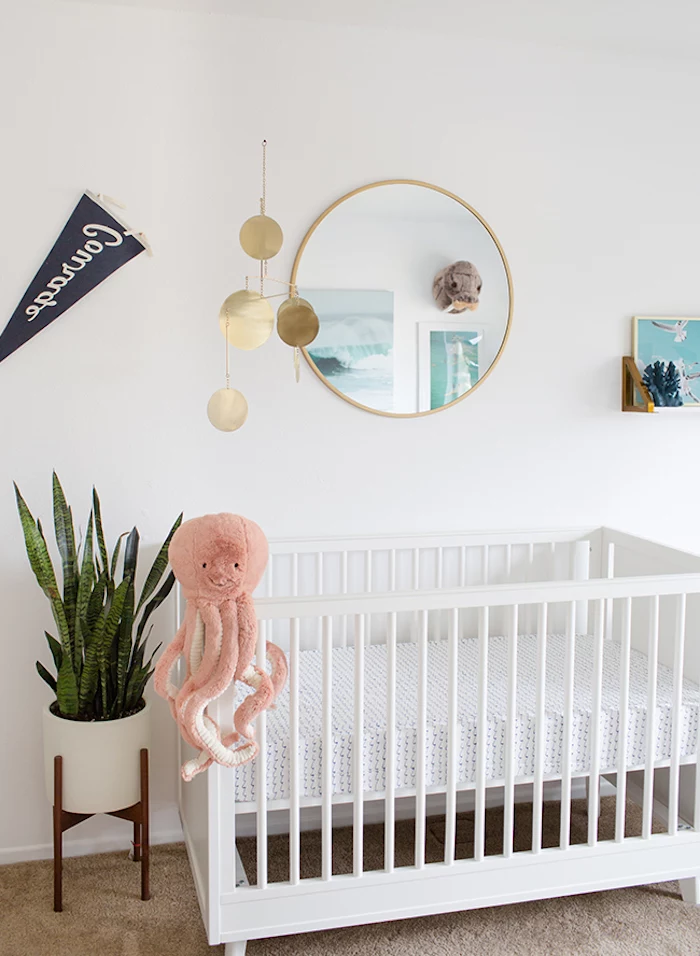


Crib Mattress Matters: The mattress is more important than the crib frame itself. For safety, it must be firm, flat, and fit snugly inside the crib with no more than two fingers of space between the mattress and the frame. A breathable mattress, like those from Newton Baby, can provide extra peace of mind by allowing air to flow freely if your baby rolls onto their stomach.


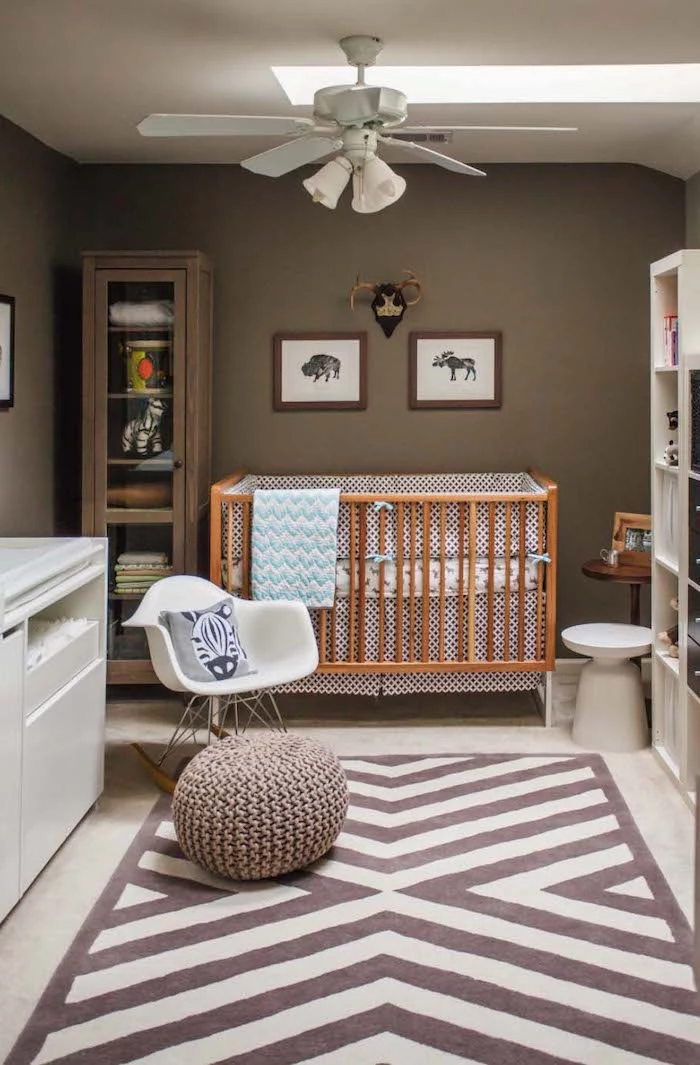
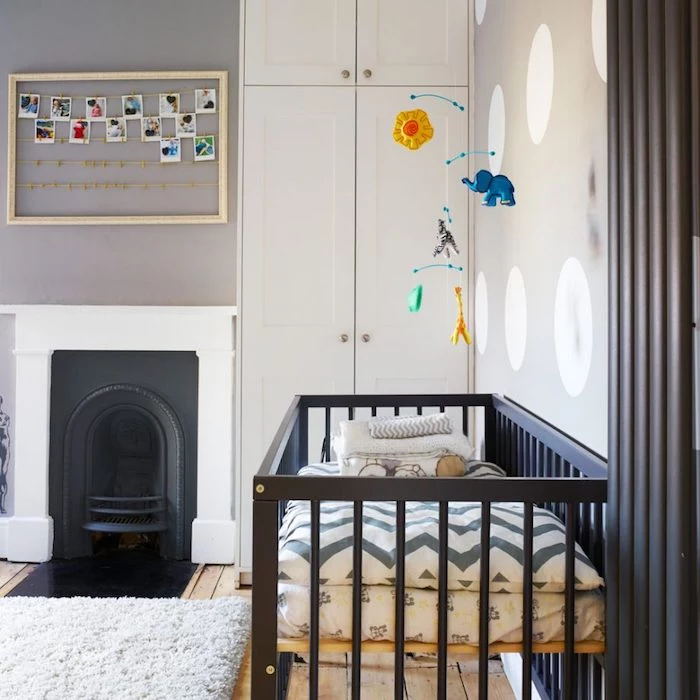
Can a nursery be stylish without a strong theme?
Absolutely. Instead of focusing on characters or trends, build a ‘vibe’ using a cohesive color palette and recurring textures. Think Scandinavian calm with light woods and soft whites, or a gentle bohemian feel with rattan, macrame, and earthy tones. This approach creates a soothing atmosphere that won’t feel dated as your child grows.
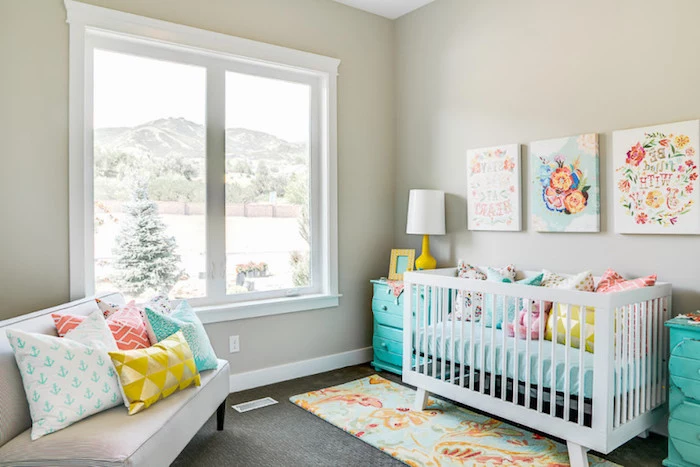
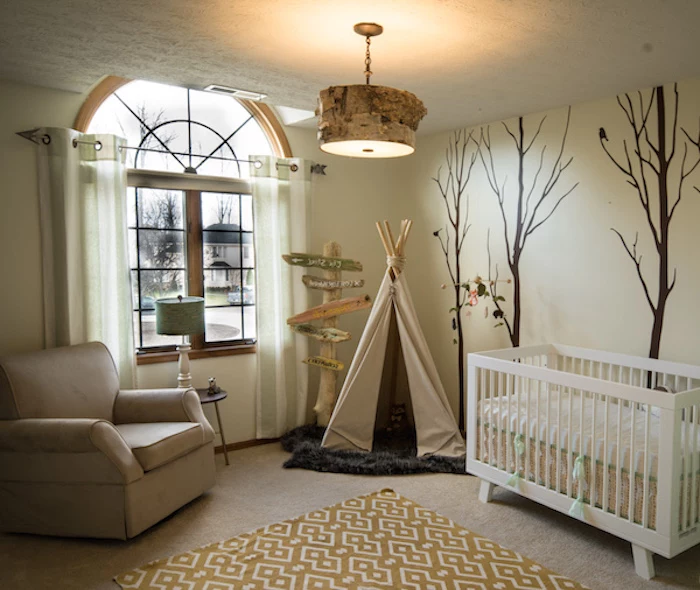
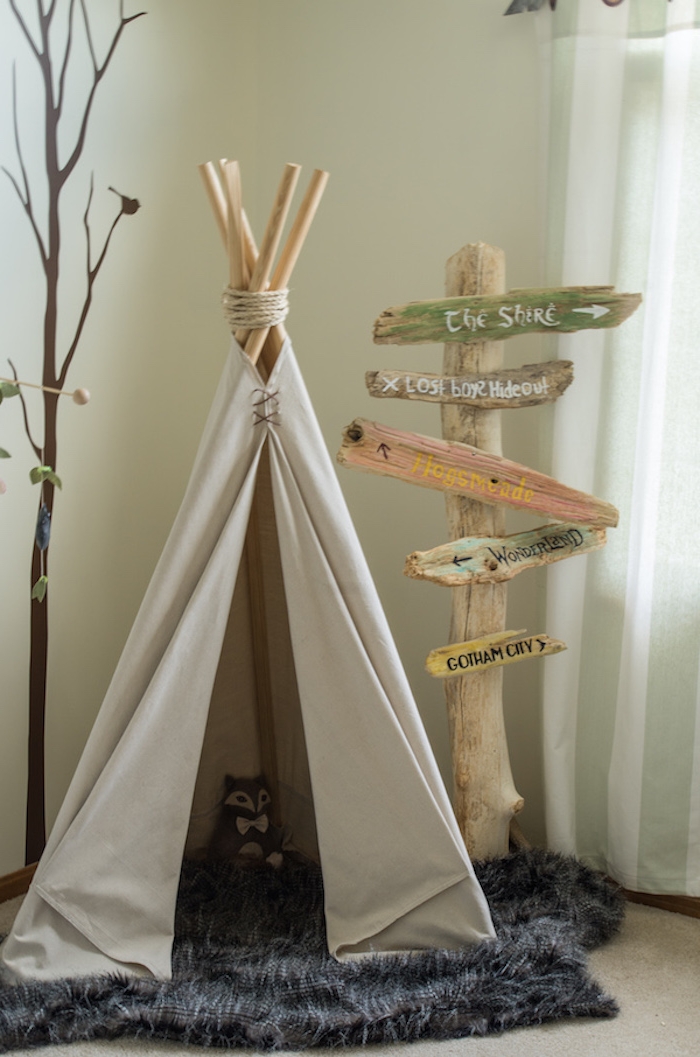
- They promote better, deeper sleep for baby (and you!).
- They protect delicate furnishings from fading in the sun.
- They help regulate room temperature, keeping it cooler in summer and warmer in winter.
The key? Investing in true blackout curtains, not just ‘room darkening’ ones.
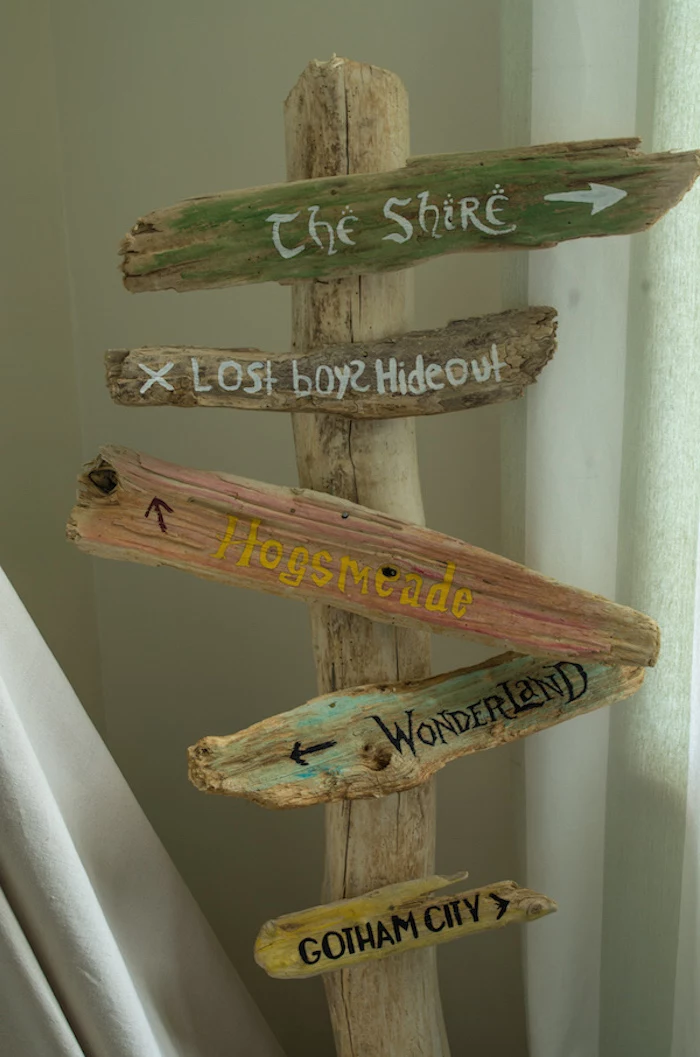
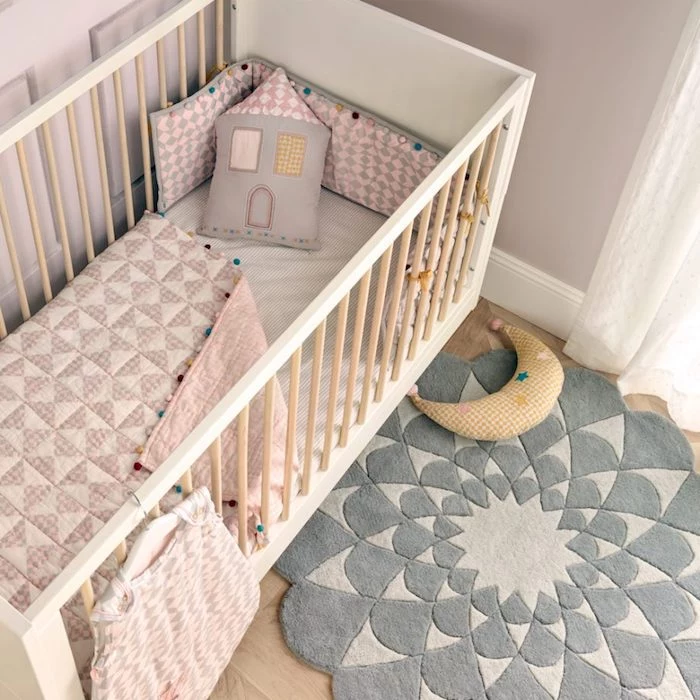
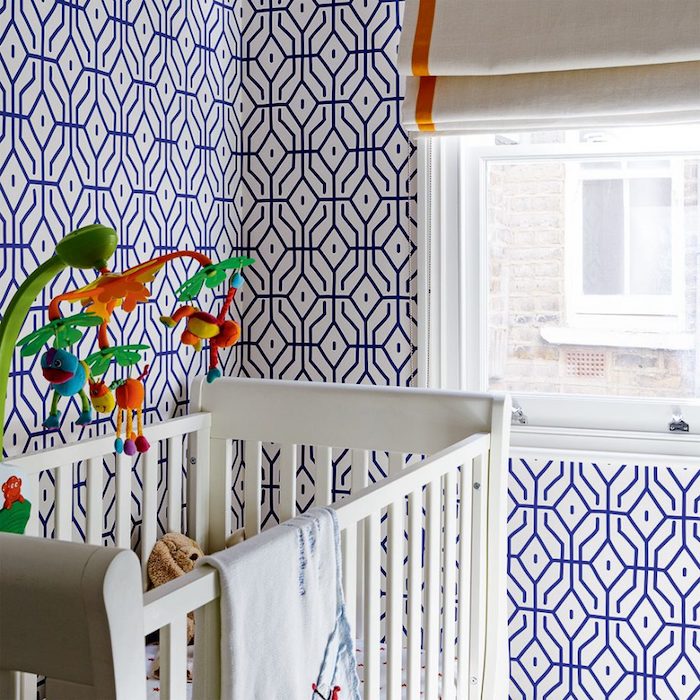
Layering light sources is a professional design trick that’s incredibly practical in a nursery. You’ll need:
- Ambient Light: A main, dimmable ceiling fixture.
- Task Light: A soft lamp near the changing table or glider (avoiding harsh, direct light).
- Night Light: A very low-wattage light to navigate the room without fully waking the baby.
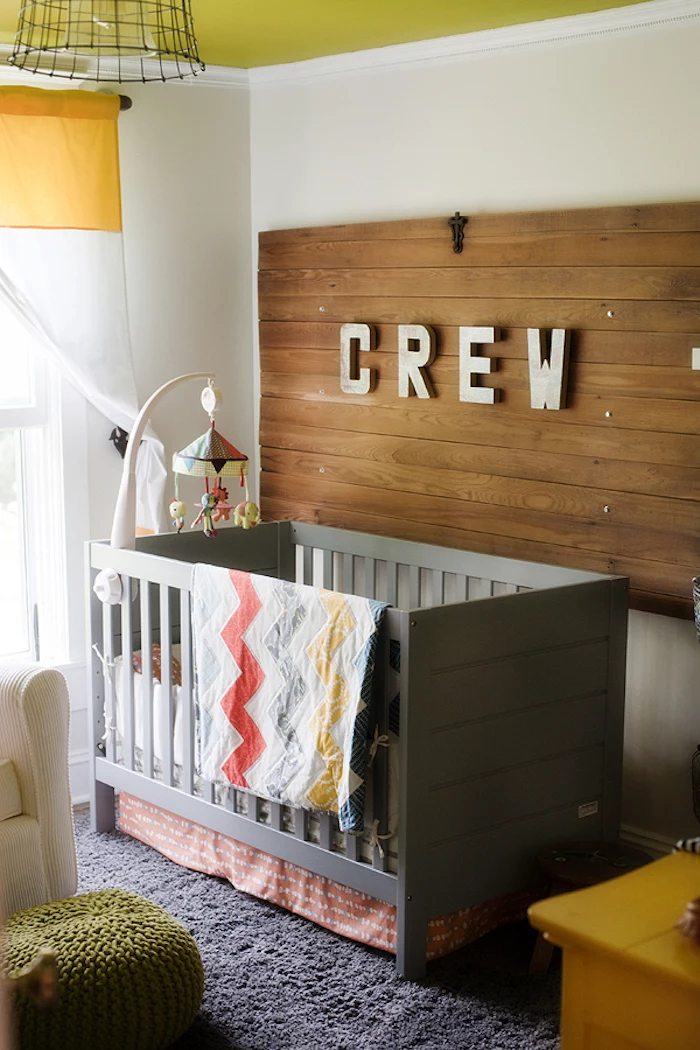
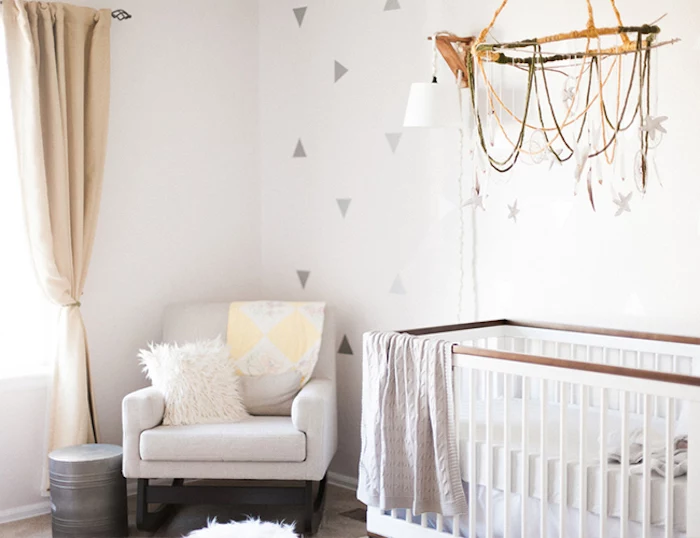
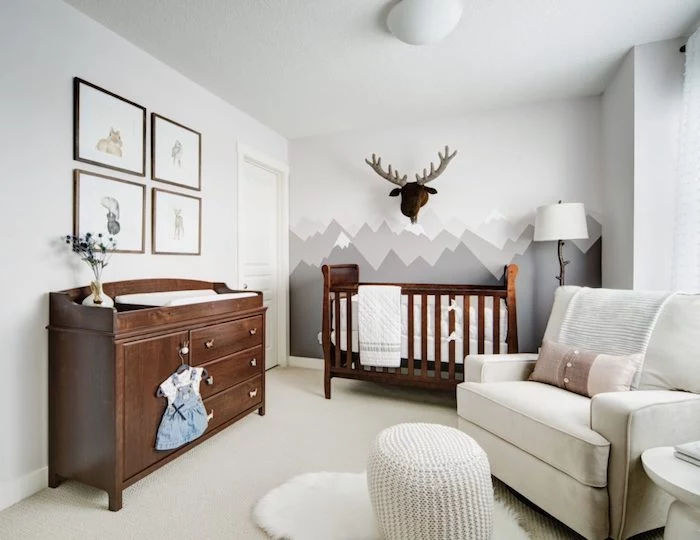
Newborns see best in high contrast. For the first few months, their world is a mix of black, white, and gray.
This is why simple, high-contrast black and white mobiles or art cards are not just a minimalist design choice; they are genuinely stimulating for your baby’s developing vision. Introduce soft colors gradually as their eyesight matures around 4 months.
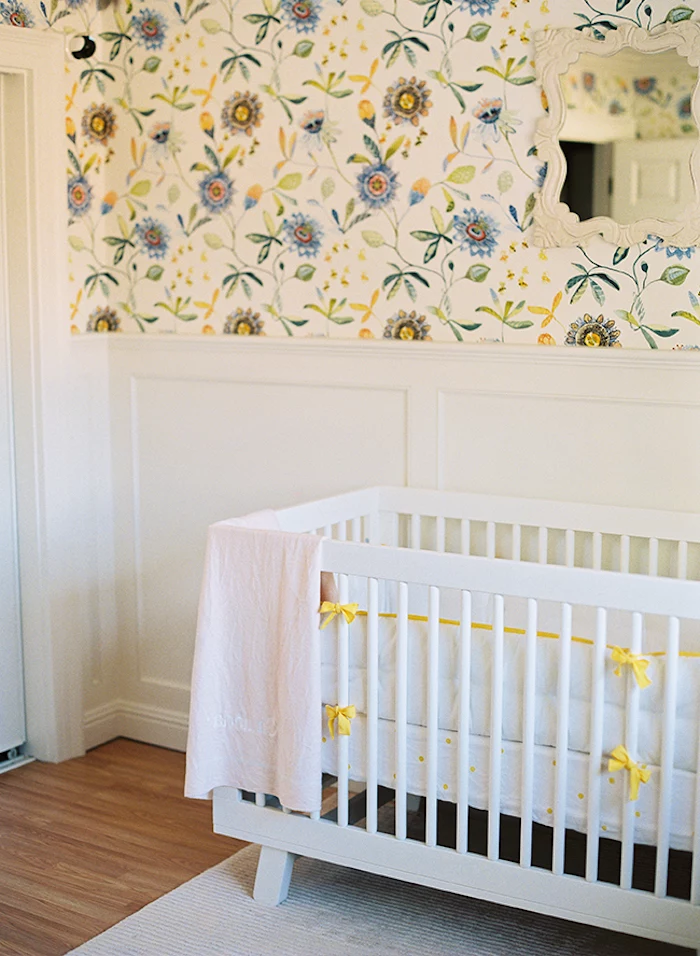
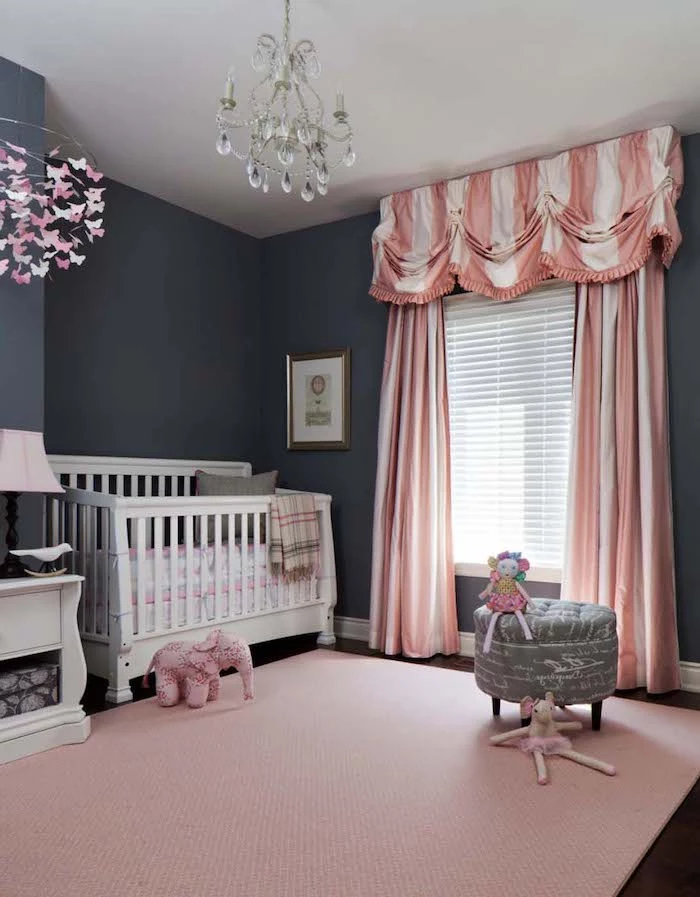
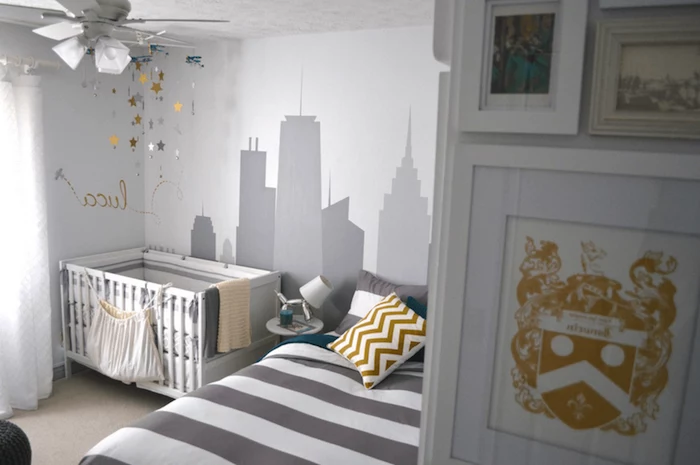
Think beyond the changing table. While a dedicated table is great, a sturdy, waist-high dresser like the IKEA Hemnes series is a smarter long-term investment. Just top it with a secure changing pad with raised sides and safety straps. Once diapers are done, you’re left with a useful piece of furniture that will last for years.

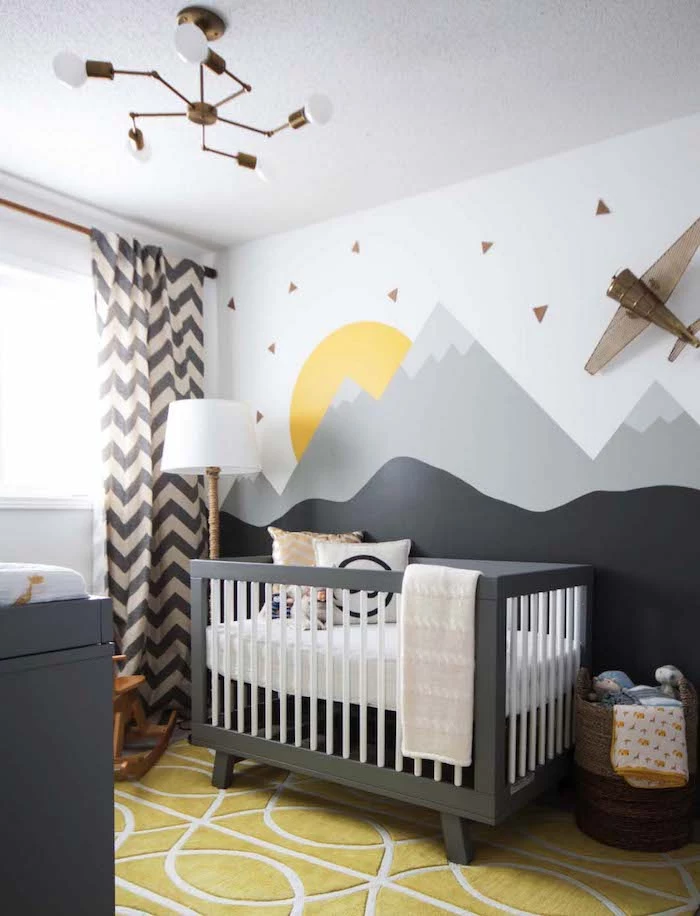
Fabric Choice: For items like crib sheets, changing pad covers, and swaddles, opt for natural, breathable fabrics. Organic cotton is soft and washes well, bamboo is known for its silky feel and thermal-regulating properties, and muslin gets softer with every wash, making it perfect for a baby’s sensitive skin.


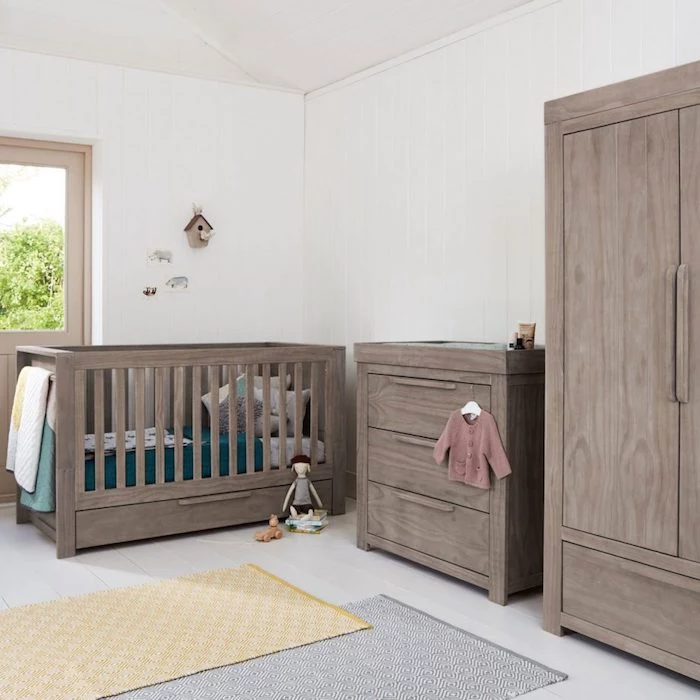
How high should I hang pictures and shelves?
A common mistake is hanging decor too high. Art should be at a seated eye-level to be enjoyed from the glider. For safety, never hang anything heavy—including framed pictures or shelves—directly over the crib. Opt for lightweight canvas art, fabric hangings, or wall decals in that space instead.
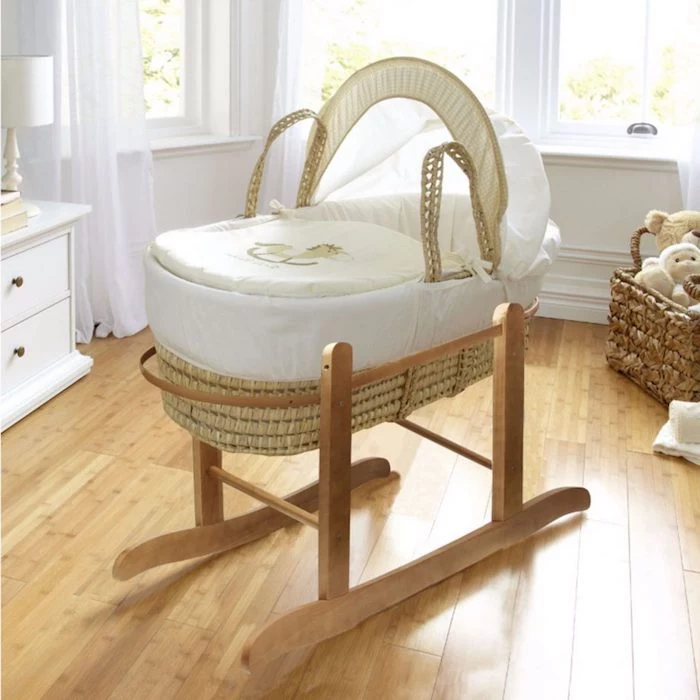
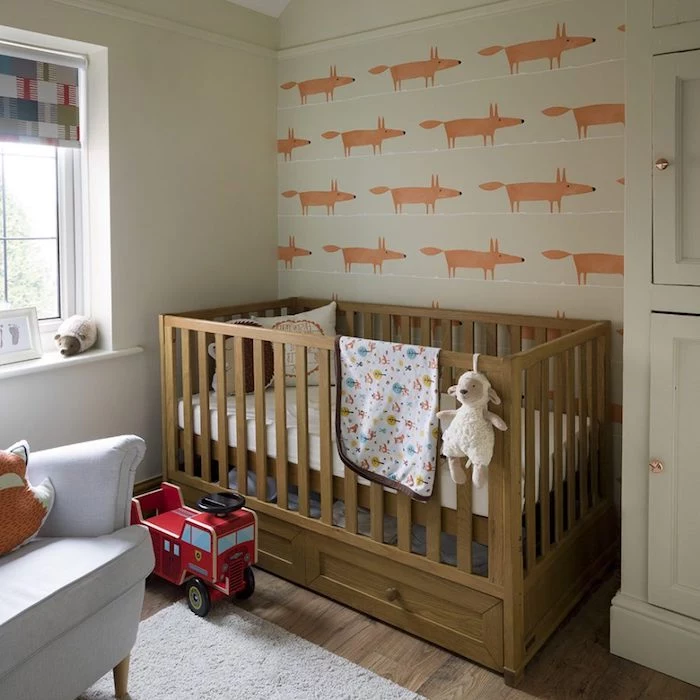
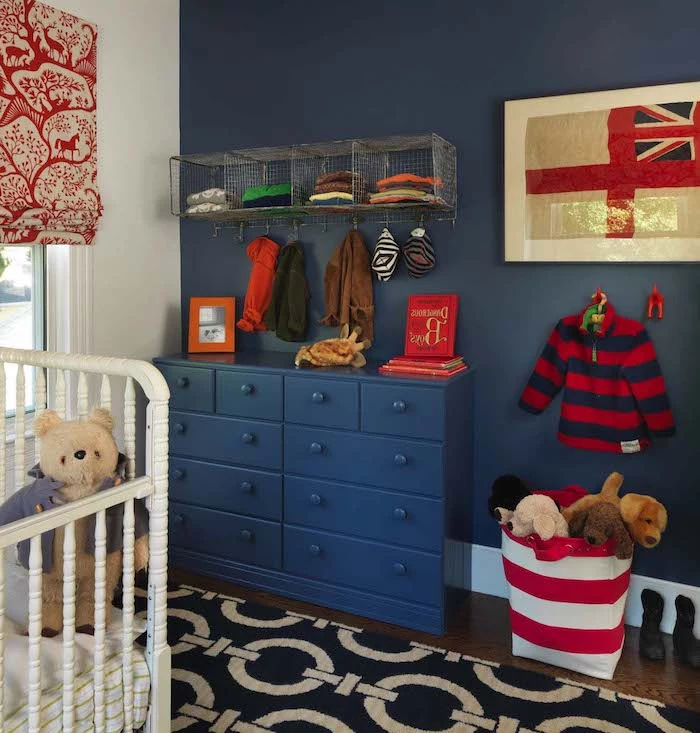
According to the CPSC, a child is sent to the emergency room about every 60 minutes because of a tip-over incident involving furniture.
This is why anchoring all heavy furniture—dressers, bookcases, changing tables—to the wall is not optional; it’s a critical safety step. Most new furniture comes with anti-tip kits. If you buy second-hand, they are inexpensive and easy to install.
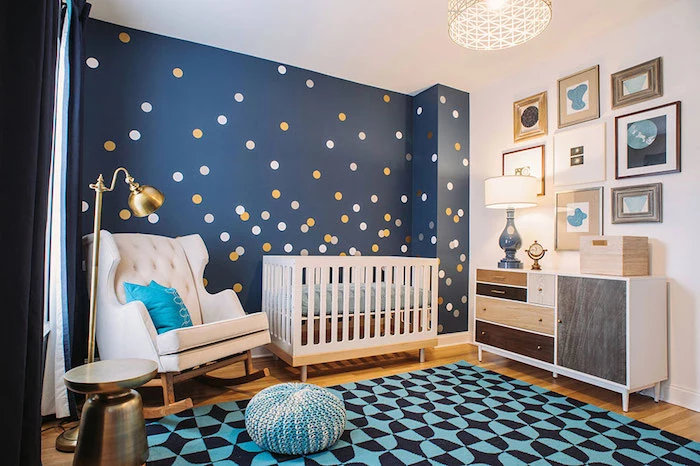
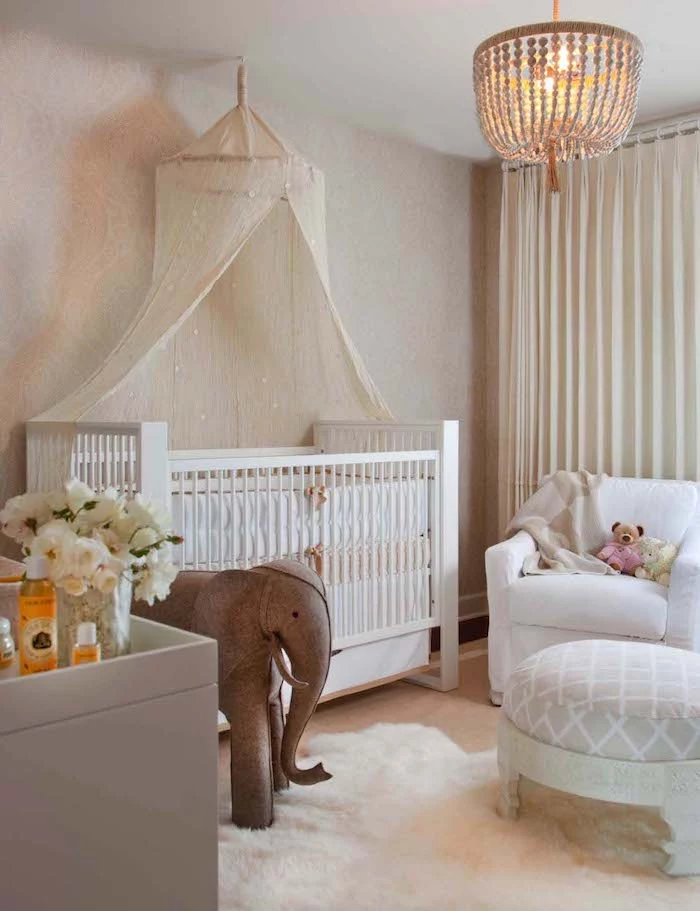
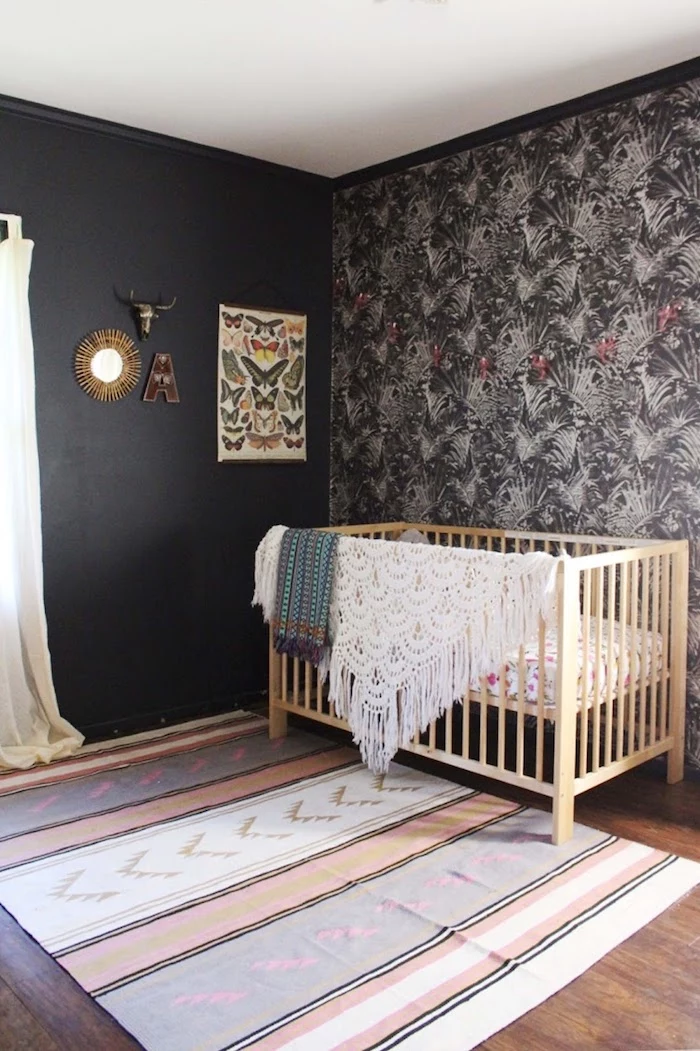
A rug doesn’t just complete the look; it adds a crucial layer of sound absorption, softness, and warmth. A wool rug is a fantastic choice as it’s naturally flame-retardant, durable, and helps to purify the air. For a more budget-friendly and easily washable option, consider a cotton or a new-generation polypropylene rug from a brand like Ruggable.


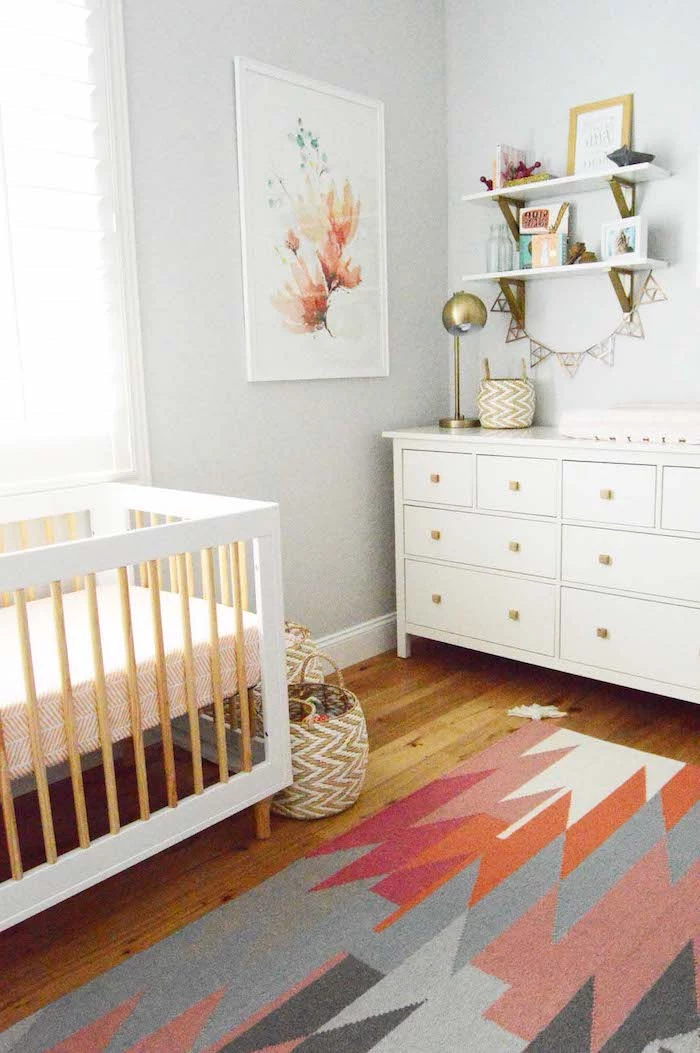
- A functional changing station is a game-changer. Keep diapers, wipes, and creams within arm’s reach in baskets or drawer organizers.
- A diaper pail with a lid is essential. The Ubbi Steel Diaper Pail is a popular choice for its ability to contain odors.
- Don’t forget a small, covered trash can for wipes and other non-diaper waste to keep things tidy.
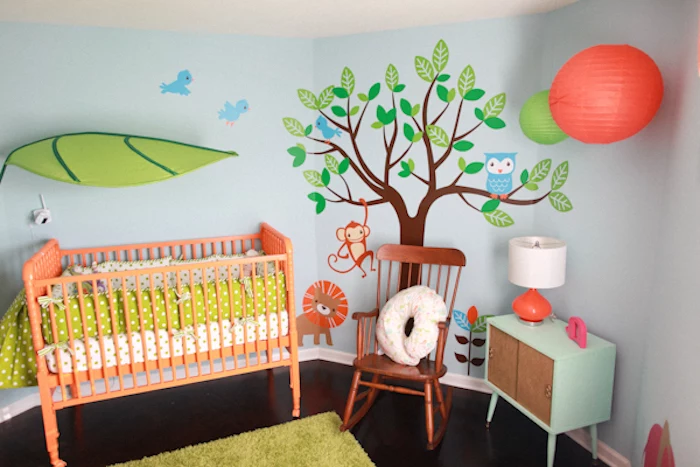
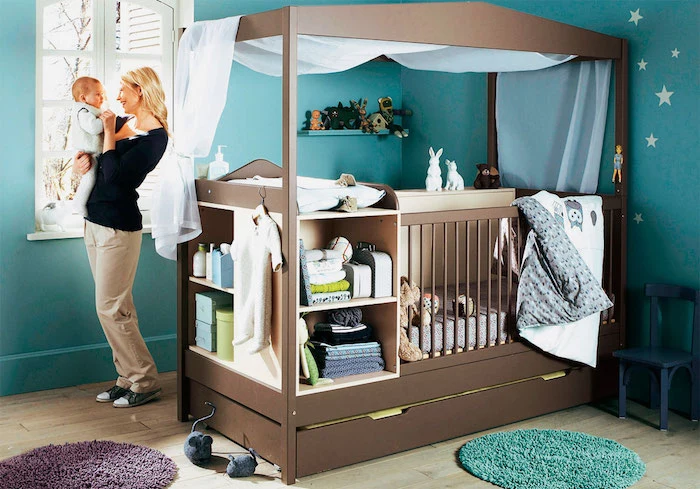
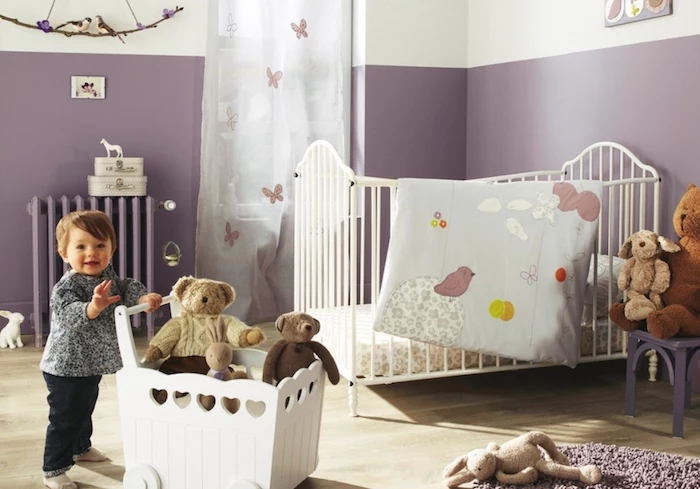
The Parent Corner: Don’t forget your own comfort! Create a small station next to your glider with a side table for your phone, a water bottle, a book, and a soft-glowing lamp. During late-night feedings, having these essentials within reach makes the experience far more comfortable and calm.
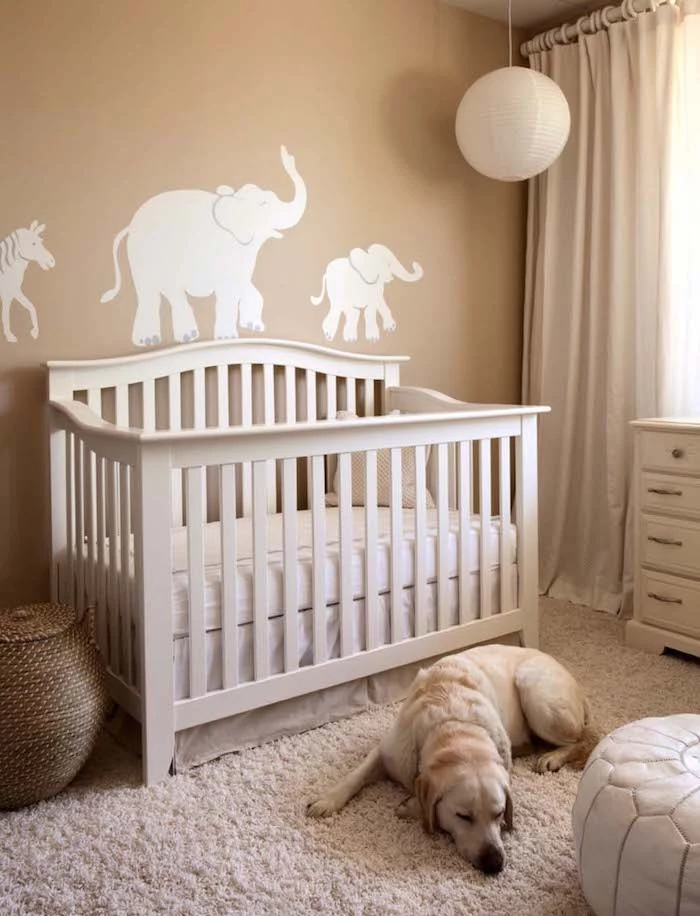
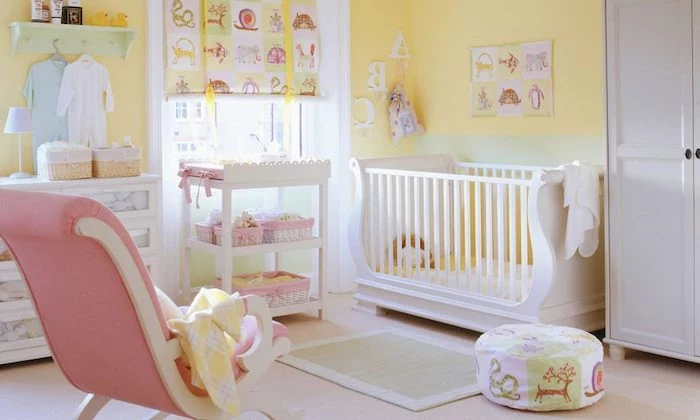
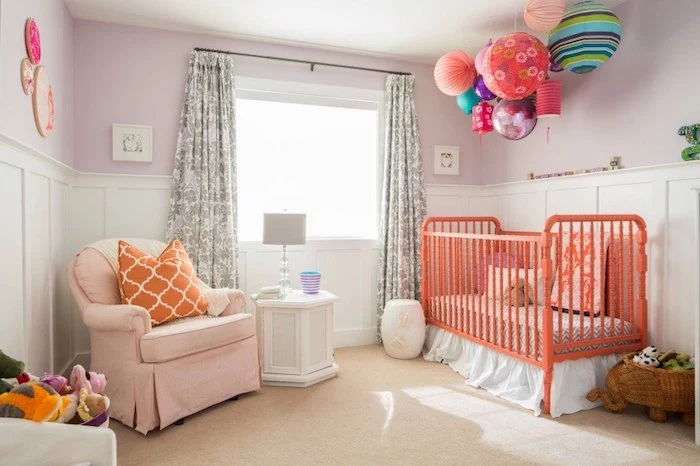
Statement Wallpaper: An accent wall with a bold, removable wallpaper is a brilliant way to inject personality without overwhelming the space. Brands like Chasing Paper or Tempaper offer stunning, non-toxic options that are easy to apply and, more importantly, easy to remove when it’s time for an update.
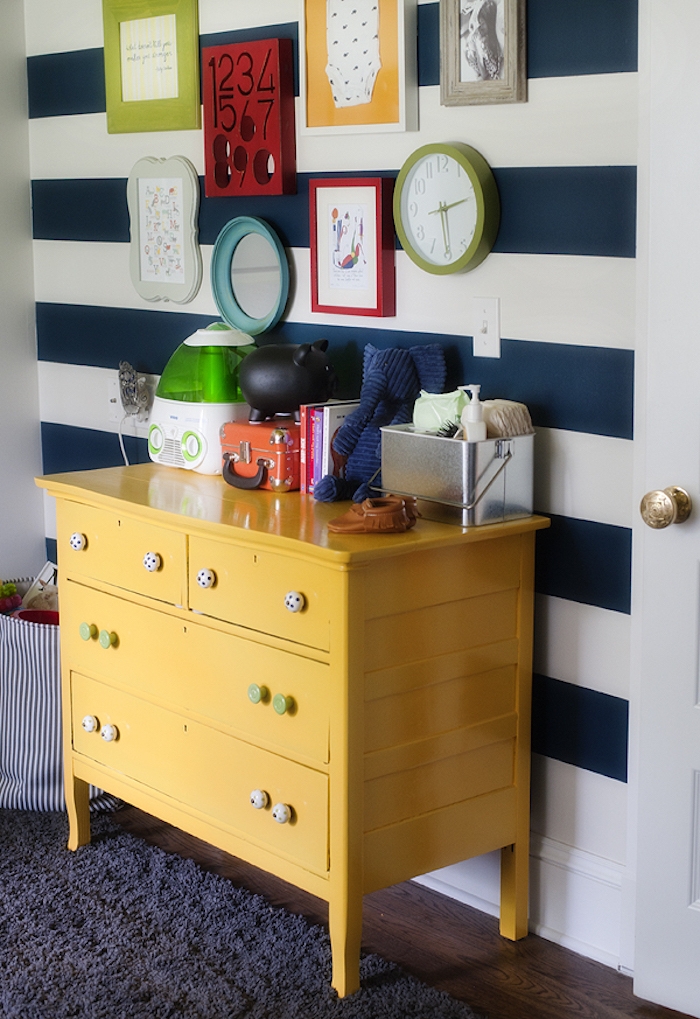

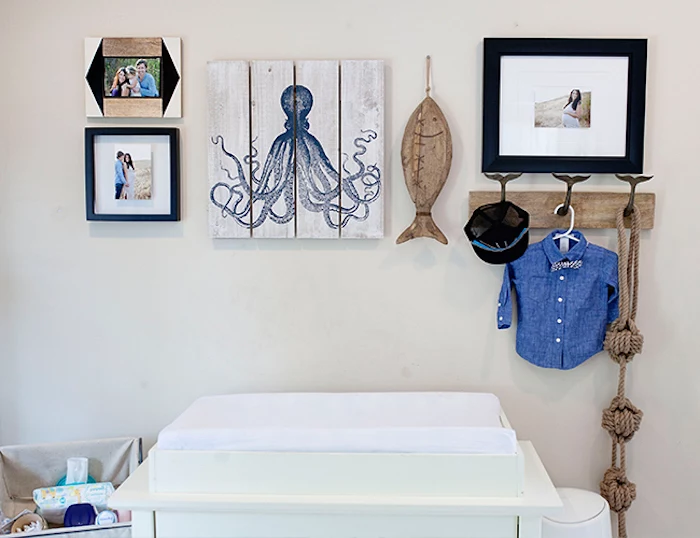
“The most effective nursery designs are simple, uncluttered, and grow with the child. Focus on a neutral base for walls and large furniture, then add personality with textiles and accessories that can be easily swapped out.” – Designer Nate Berkus
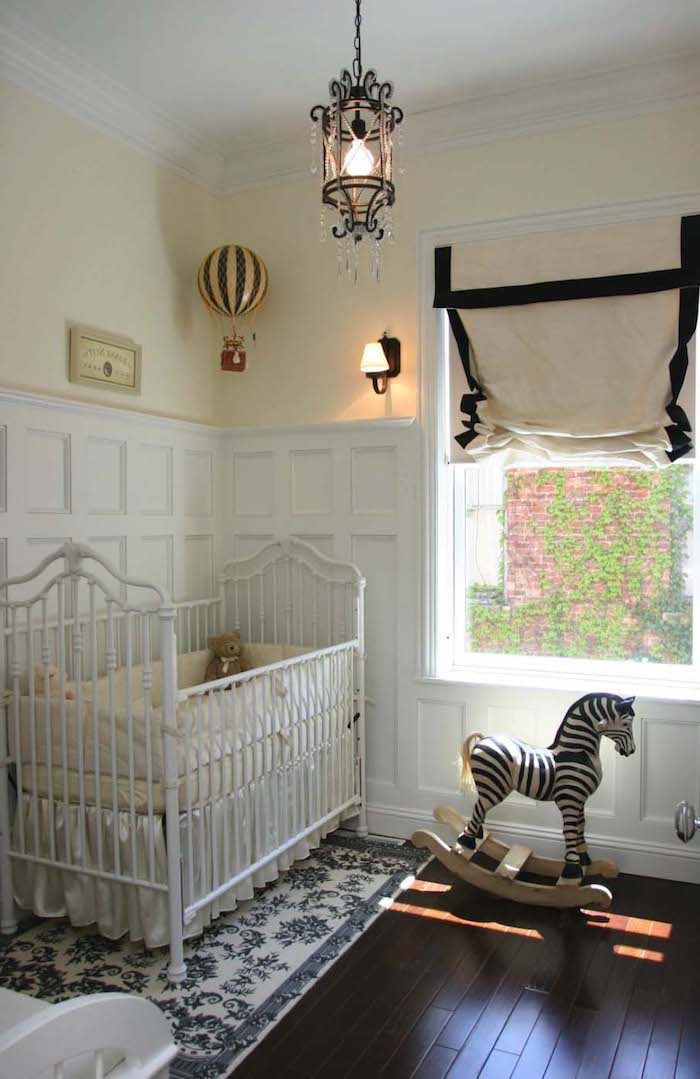
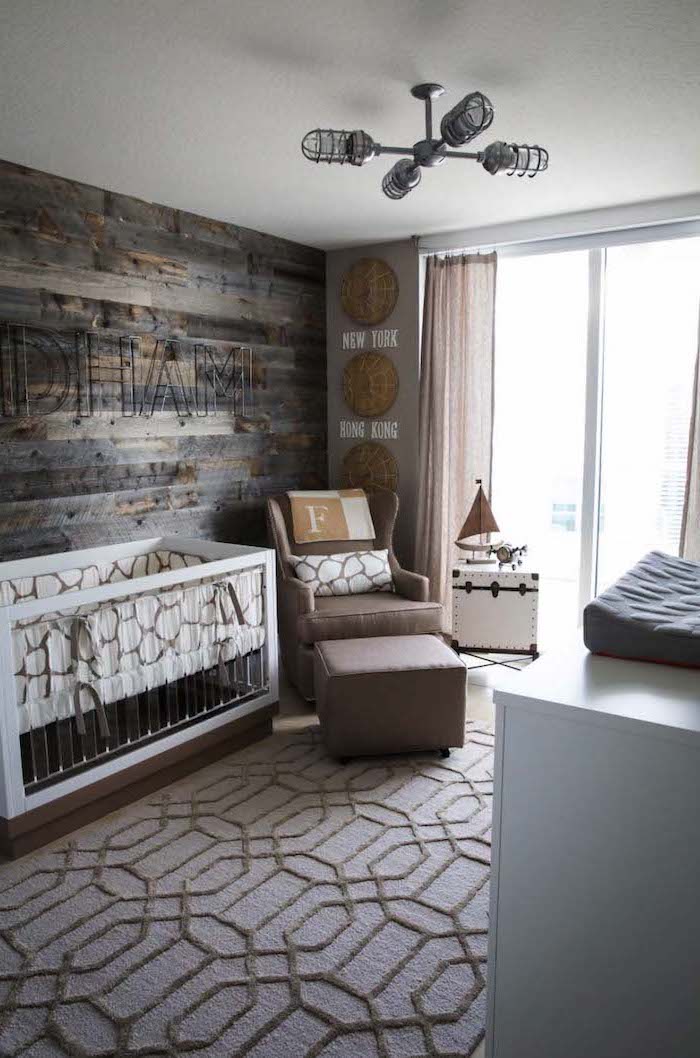
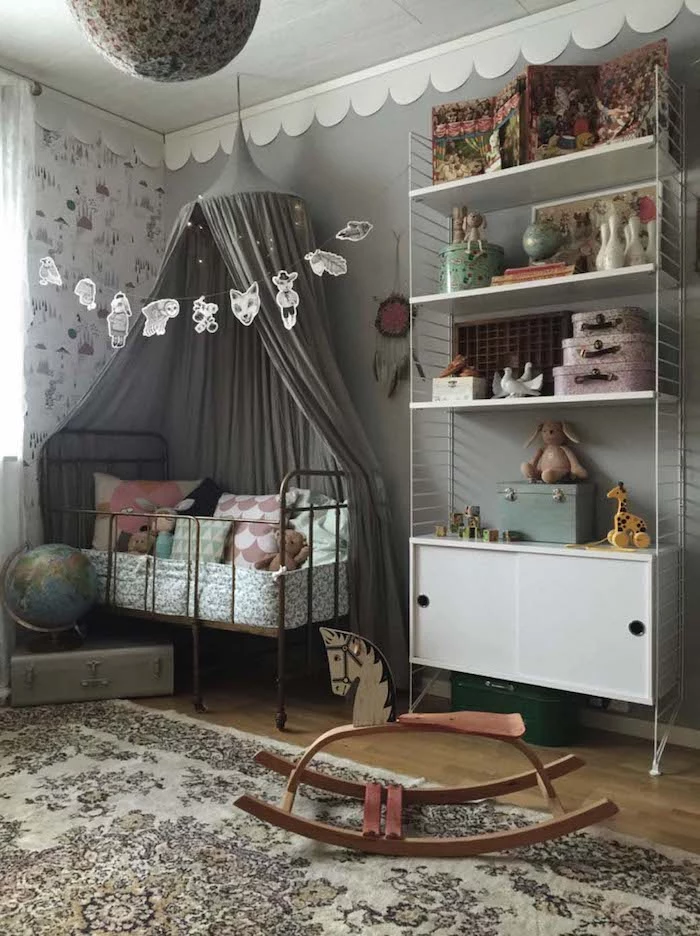
Is a floor bed a good idea?
Inspired by Montessori principles, a floor bed (essentially a firm mattress on the floor) can foster independence, allowing a toddler to get in and out of bed on their own. However, it requires rigorous room-proofing. Every outlet must be covered, all furniture anchored, and all cords secured and out of reach. It’s a choice that empowers the child but demands extra diligence from the parent.
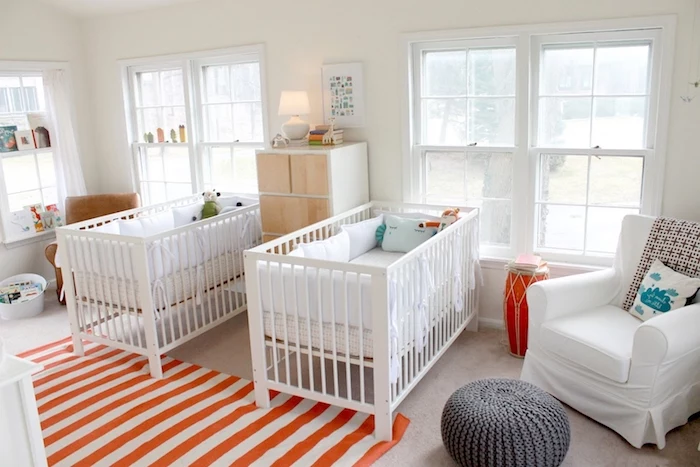
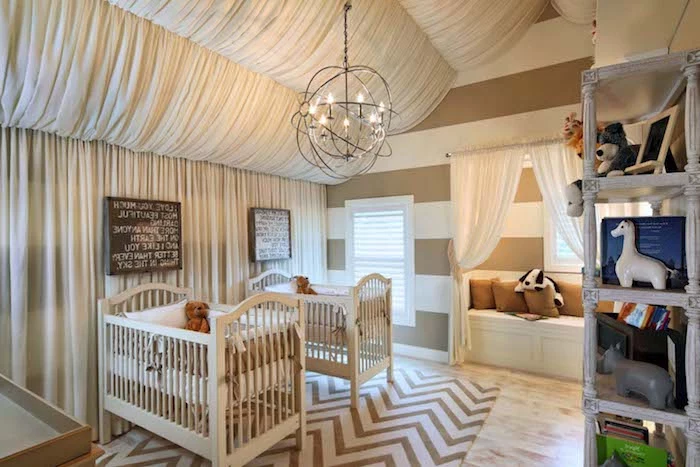
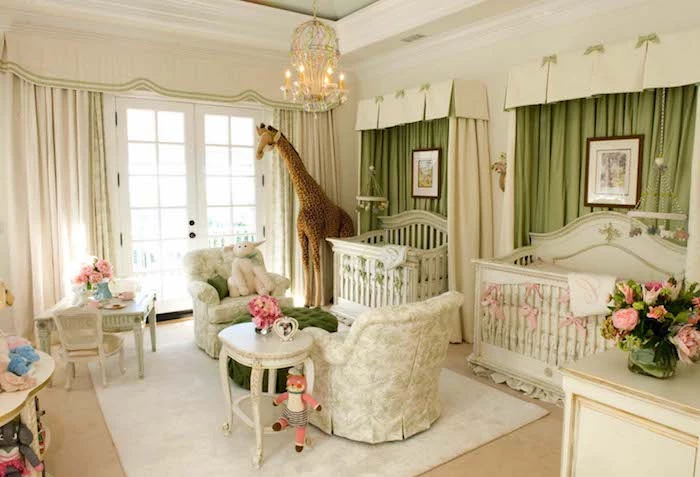
Natural Rattan and Wicker: These materials bring warmth and texture to a nursery, fitting beautifully with bohemian, coastal, or even minimalist decor. A rattan bassinet, a wicker toy basket, or a light fixture can add a touch of organic style. Ensure any vintage pieces are well-made with no sharp, brittle edges.
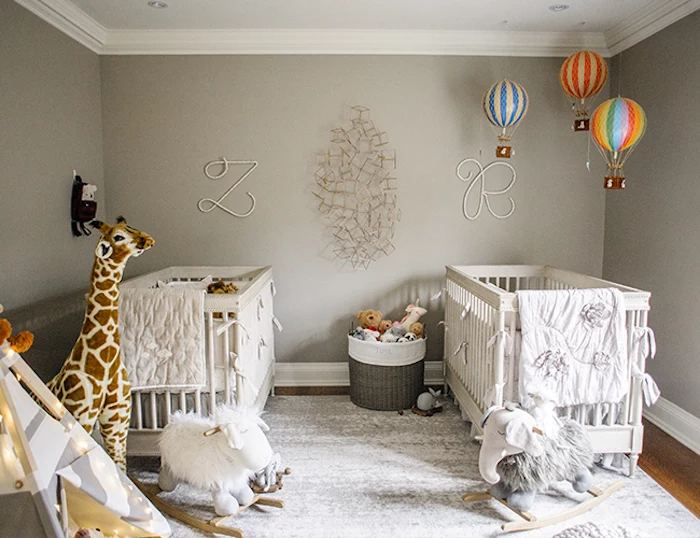
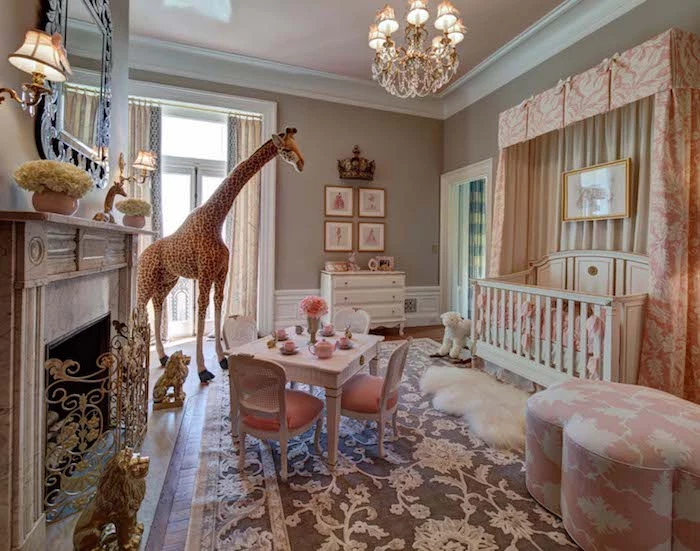
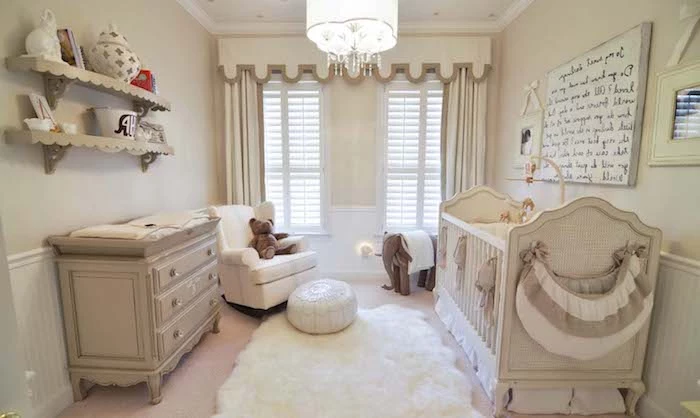
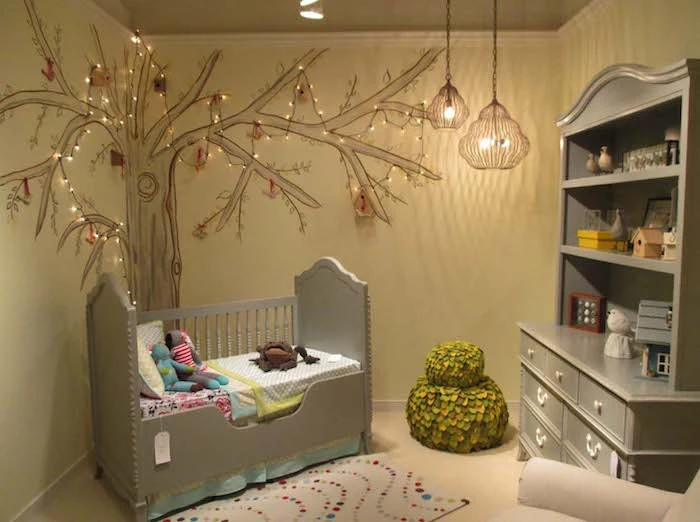
Convertible Cribs: A 4-in-1 convertible crib is the ultimate long-term investment. It transforms from a crib to a toddler bed, then a daybed, and finally a full-size headboard.
Standard Cribs: These are often less expensive and can have a smaller footprint, ideal for tight spaces. They are perfectly safe but will need to be replaced by a toddler bed in a few years.
For longevity, the convertible model often provides better value.
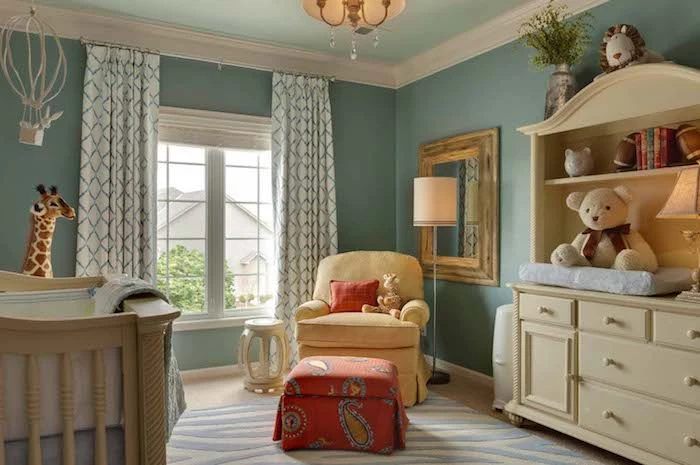
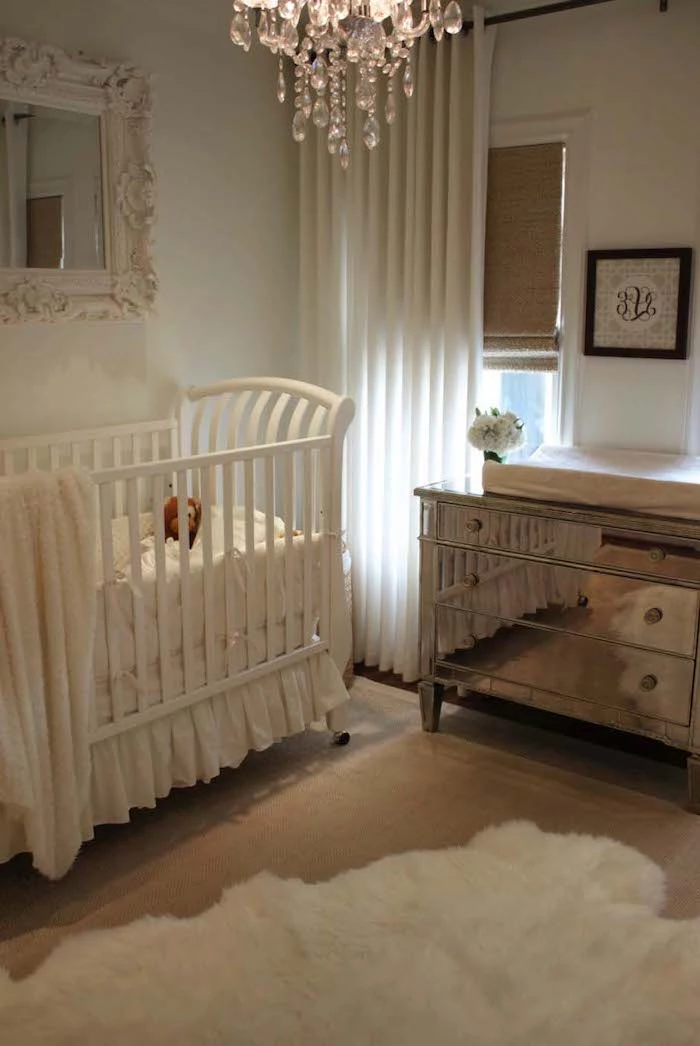
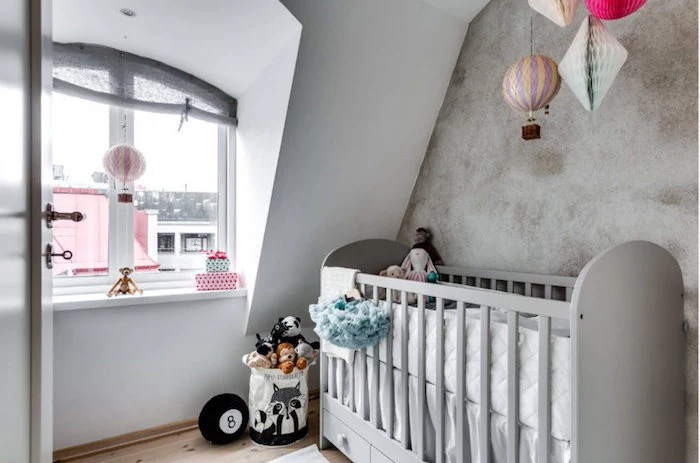
- Create a sense of calm and order, reducing overstimulation for the baby.
- Make the room feel larger and more airy.
- Simplify cleaning and tidying—a huge plus for tired parents.
The secret? Smart storage. Use lidded baskets and drawer organizers to hide clutter while keeping essentials accessible.
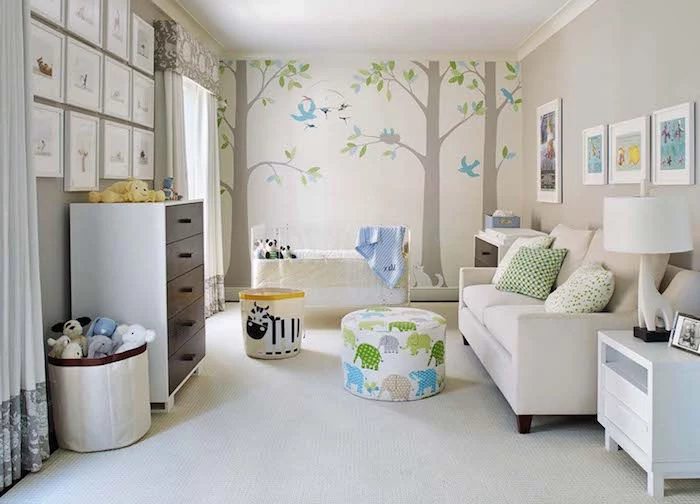
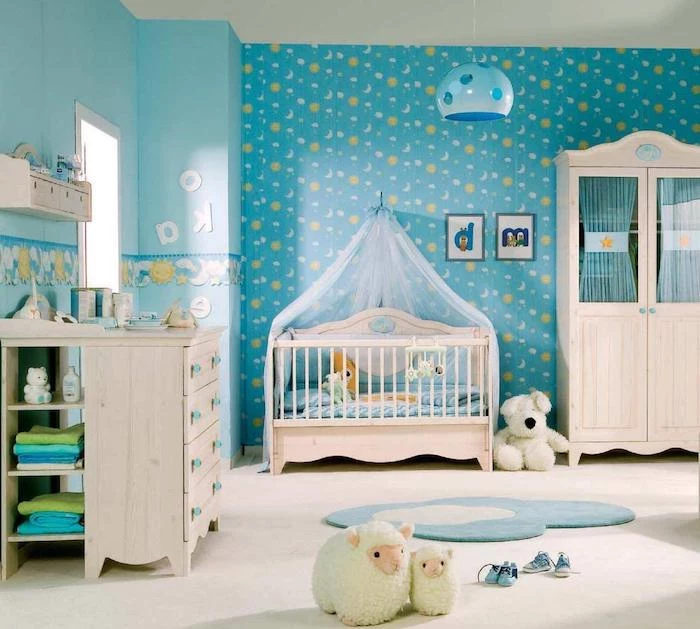
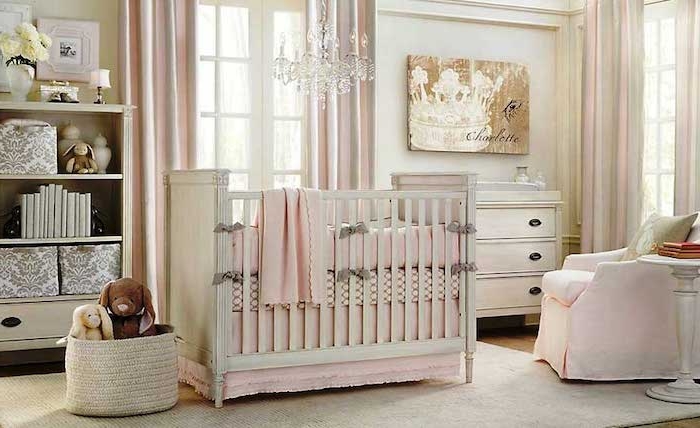
Before bringing a beautiful vintage or second-hand crib into your home, check that it meets modern safety standards. The slats should be no more than 2 3/8 inches apart (the width of a soda can) to prevent entrapment. Avoid any cribs with drop-sides, which were banned in the U.S. in 2011 due to safety risks.
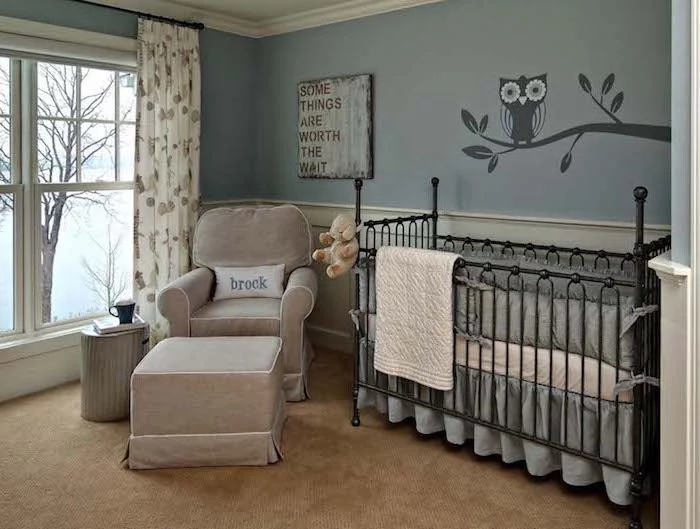
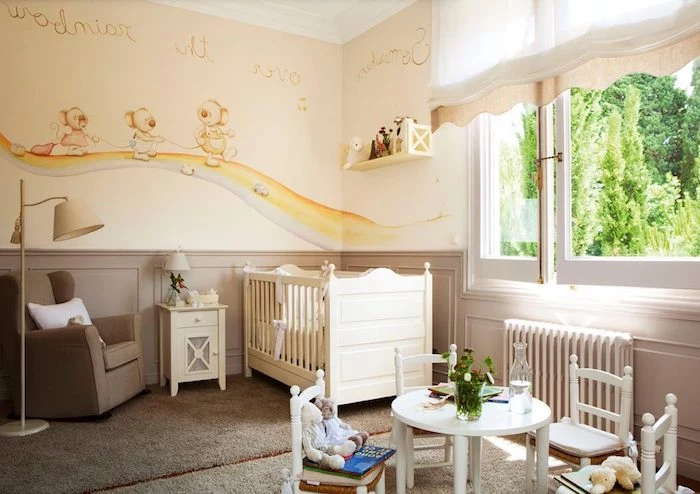

The power of paint: A color like ‘Healing Aloe’ by Benjamin Moore or ‘Setting Plaster’ by Farrow & Ball creates a serene and timeless backdrop. Soft greens and blues are known for their calming effects, while warm, dusty pinks feel nurturing. Remember to use a zero-VOC formula for healthy air quality.
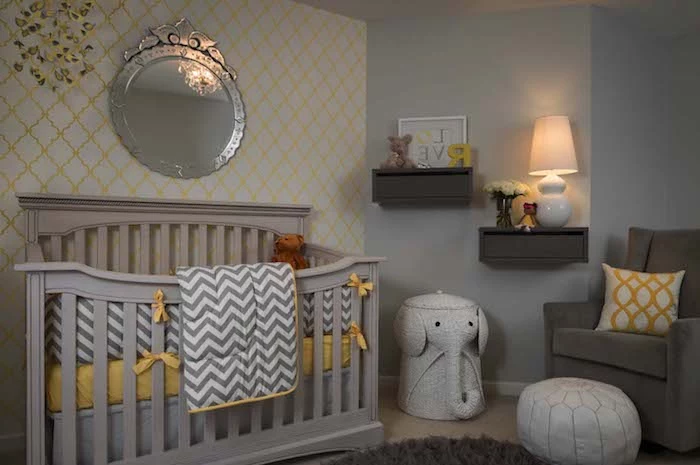
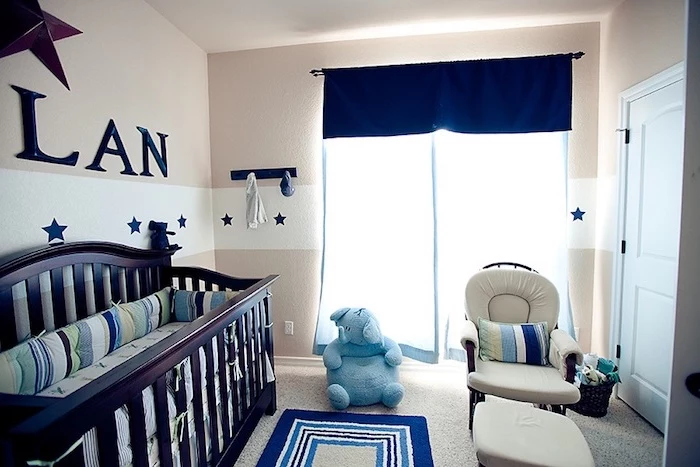
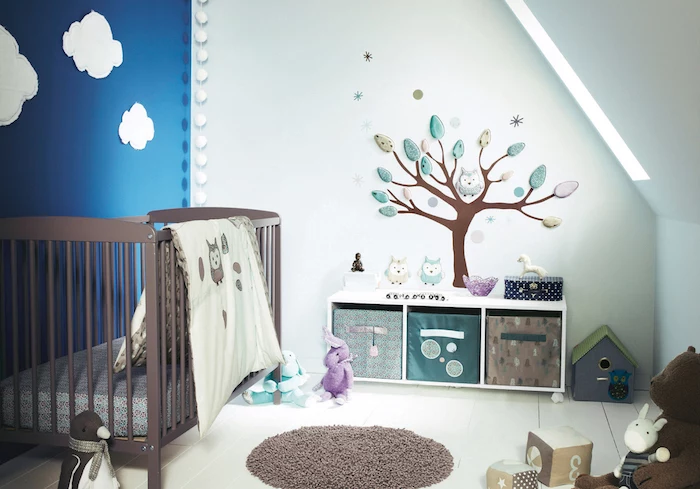
An average baby will go through over 2,500 diapers in their first year alone.
This staggering number highlights why your changing station needs to be an ergonomic and efficiency-driven zone. Having everything perfectly organized and within arm’s reach isn’t just a nicety; it’s a necessity for handling thousands of changes smoothly and safely.
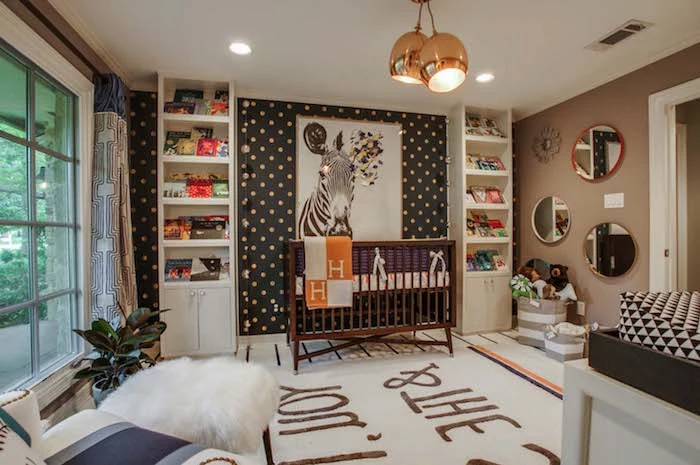
A touch of DIY: You don’t need to be an artist to create meaningful decor. Frame a few pages from a beloved childhood book (like ‘Goodnight Moon’ or ‘Where the Wild Things Are’). It’s a personal, inexpensive, and charming way to add art that tells a story.

